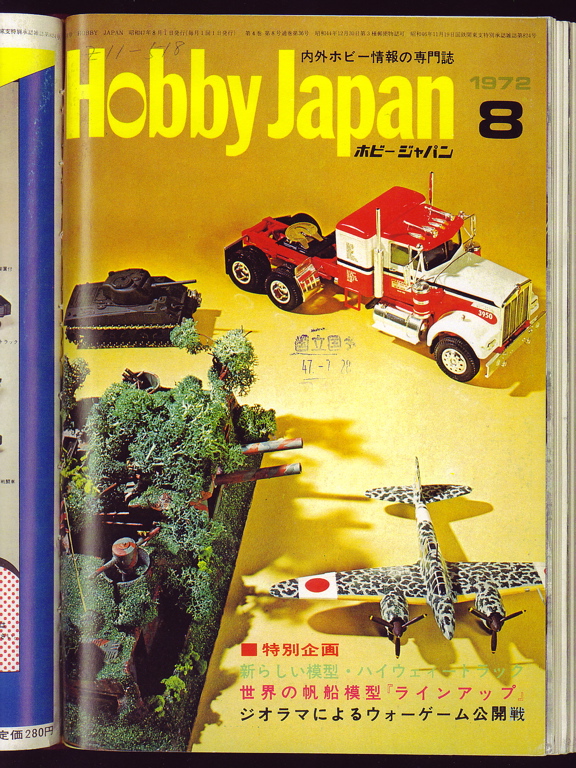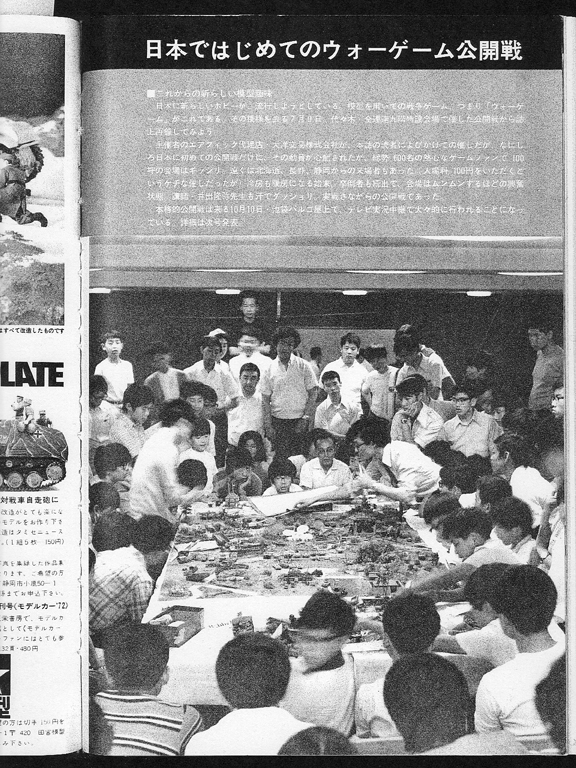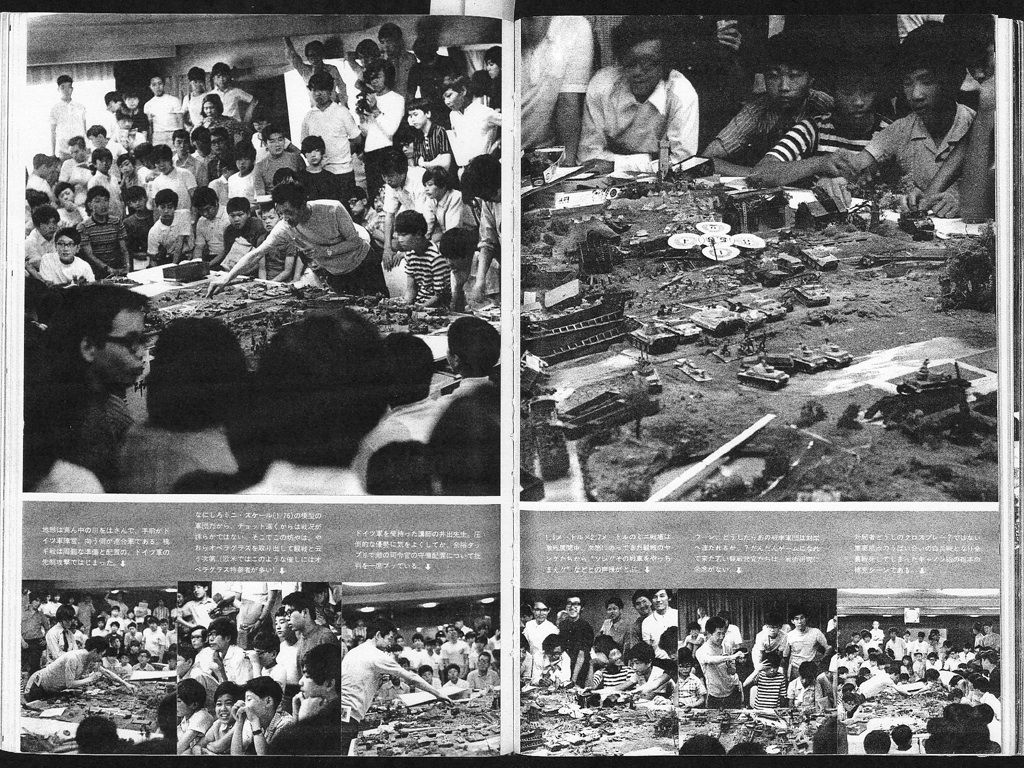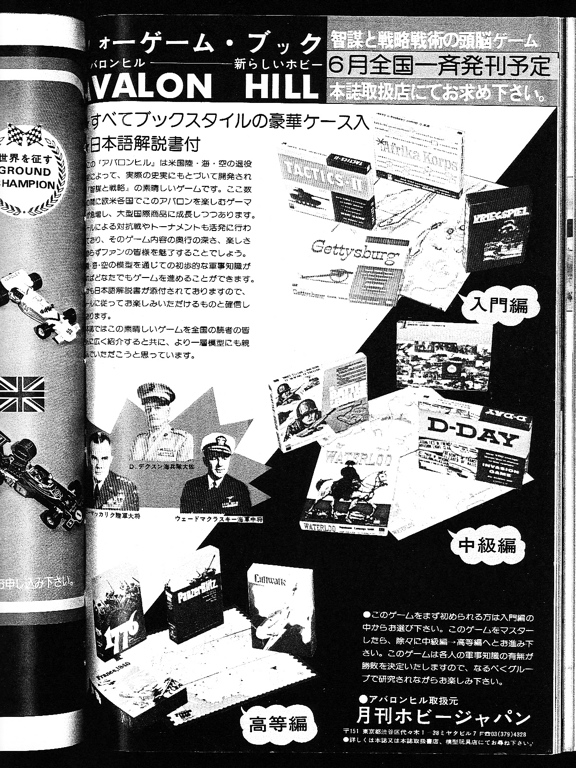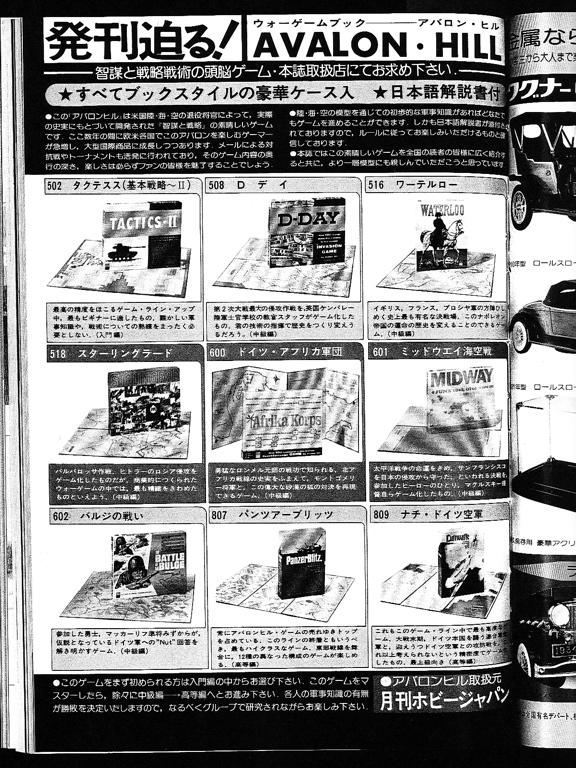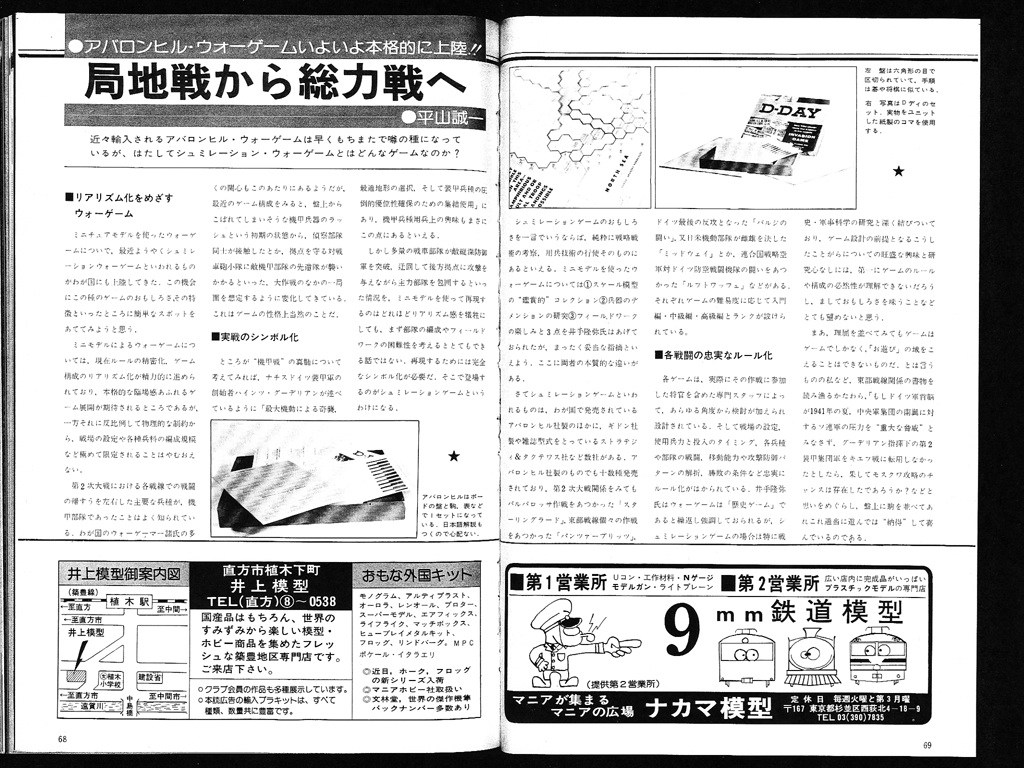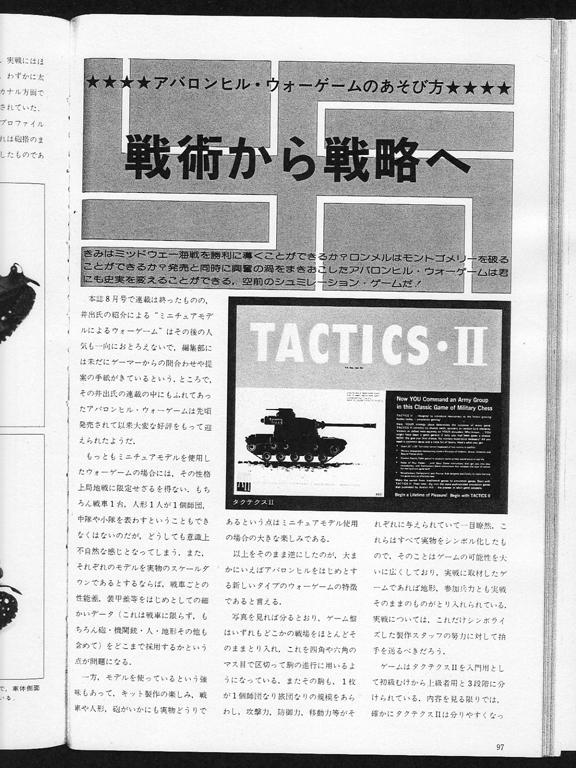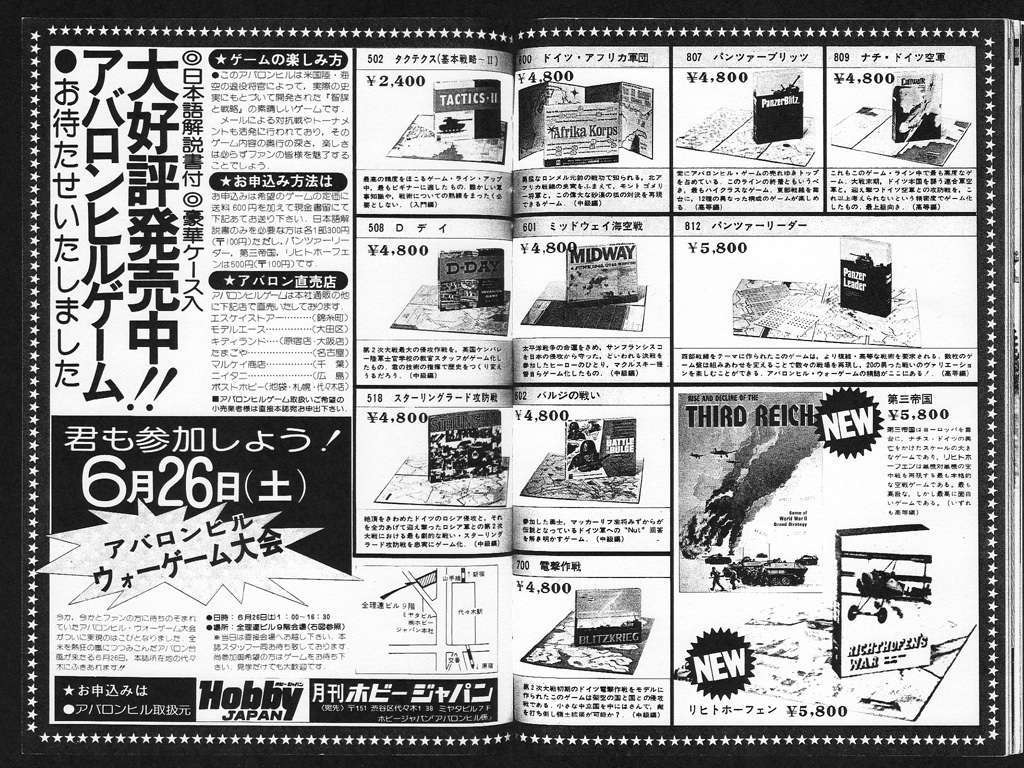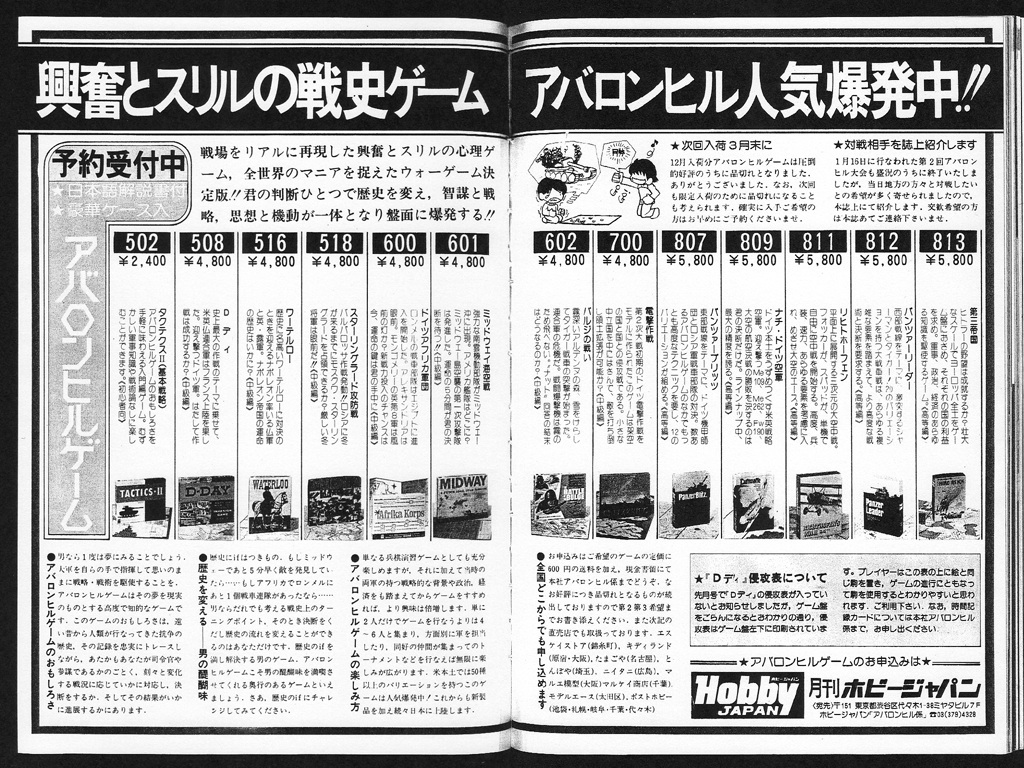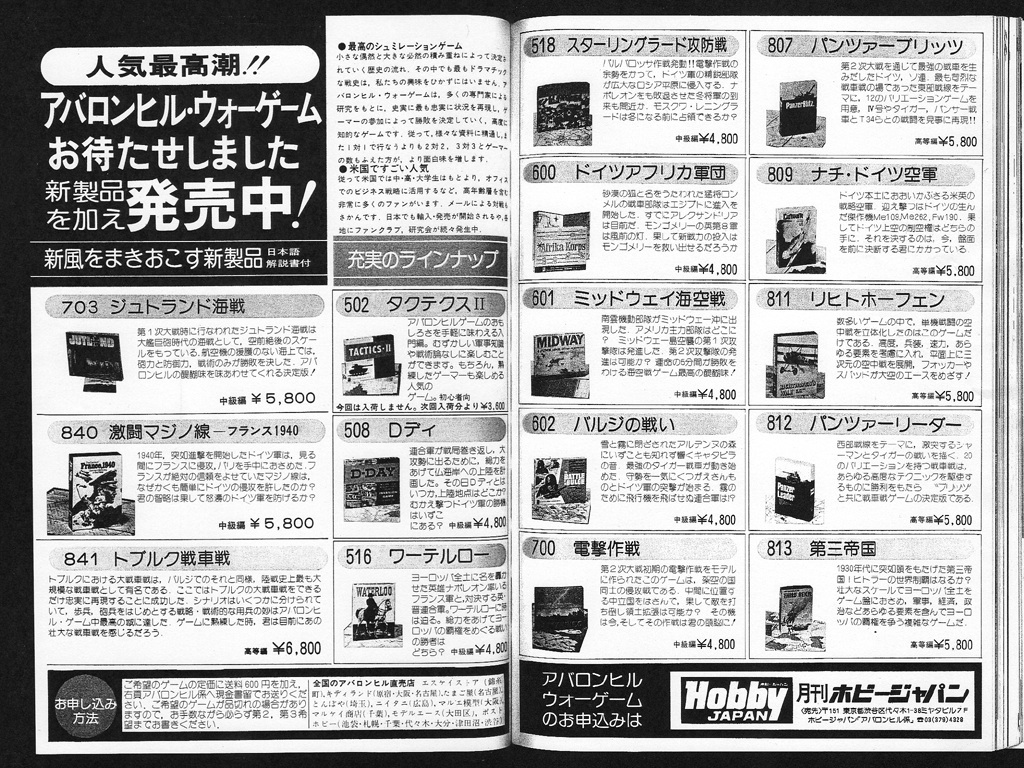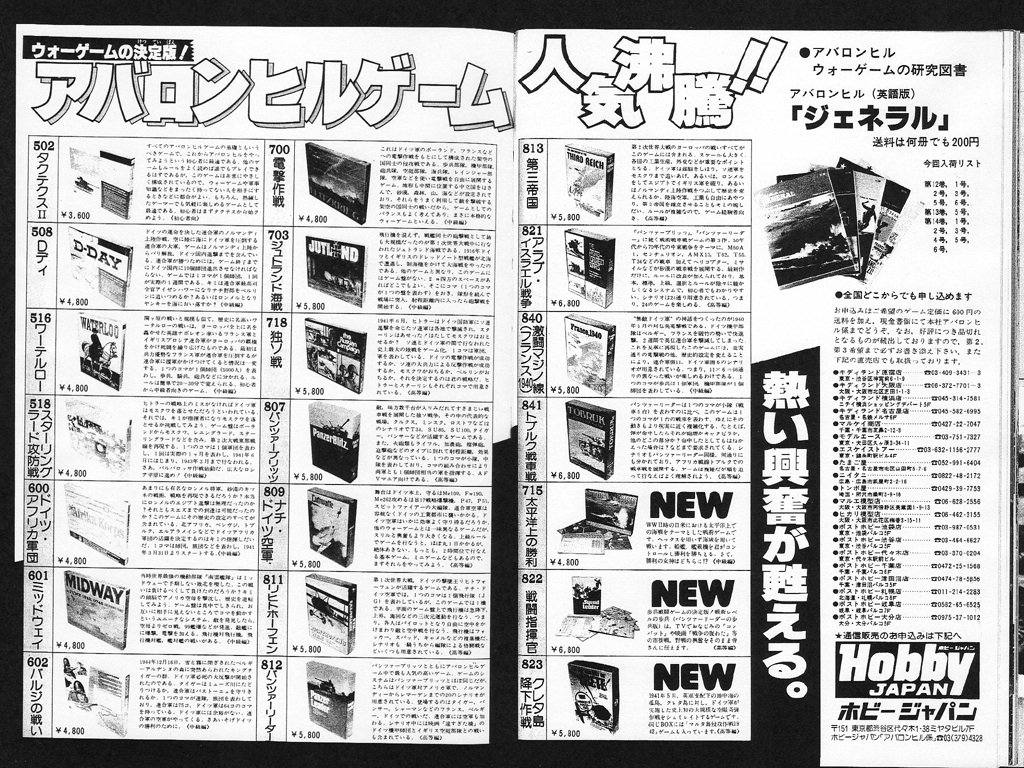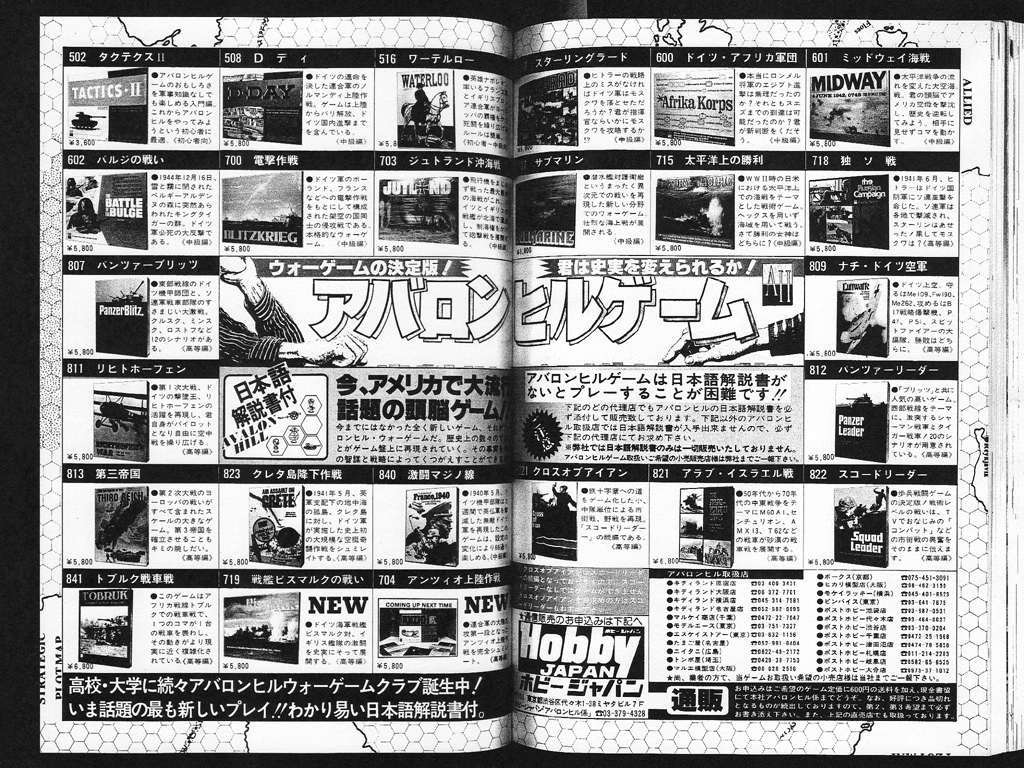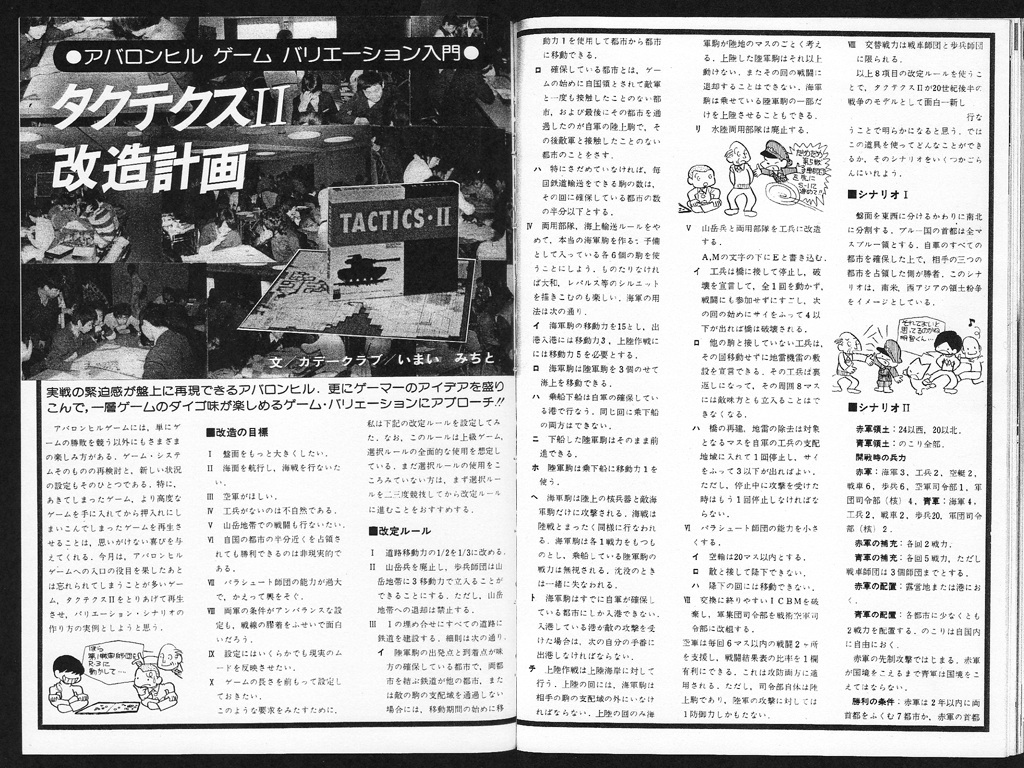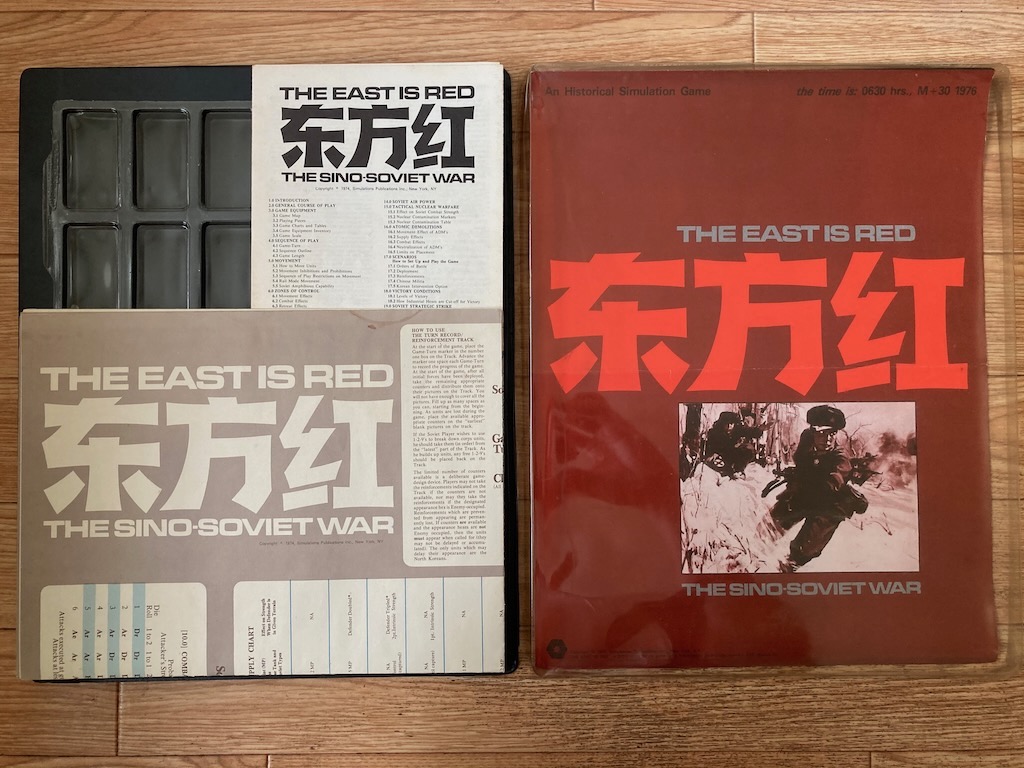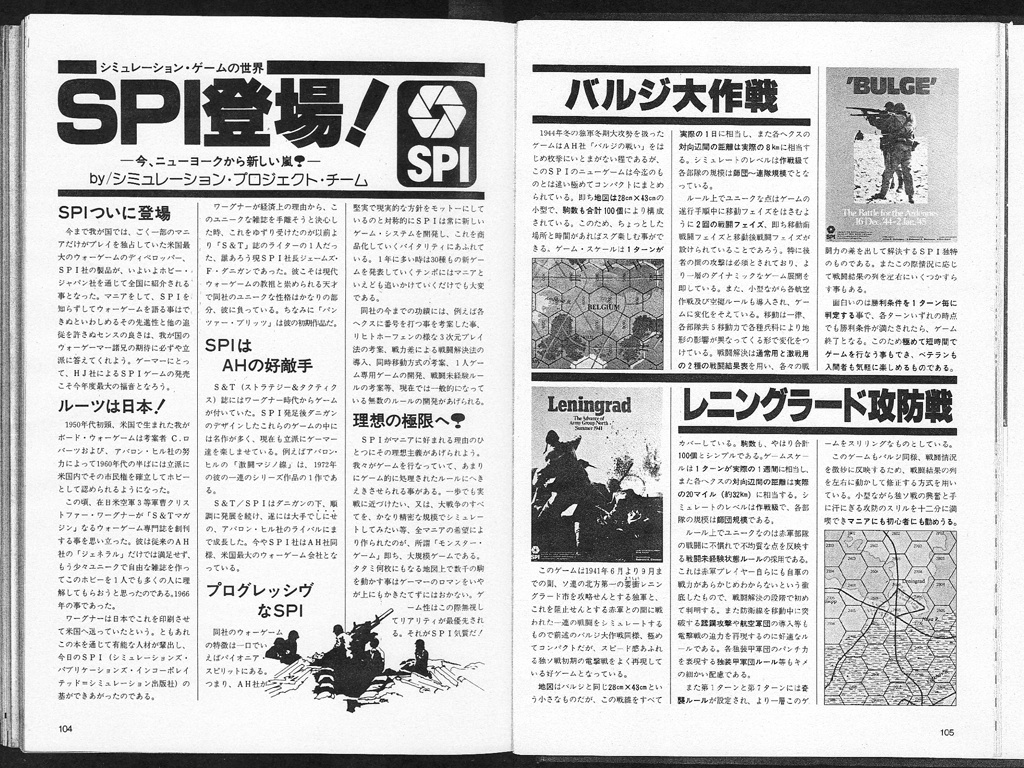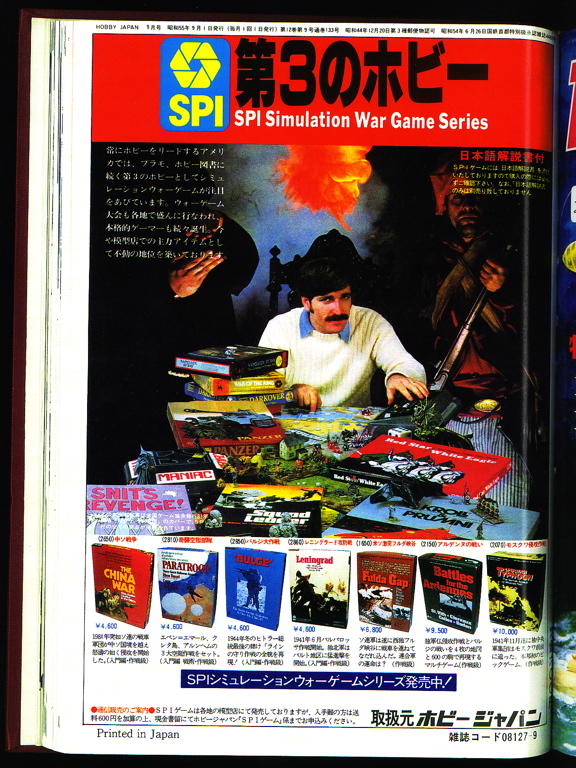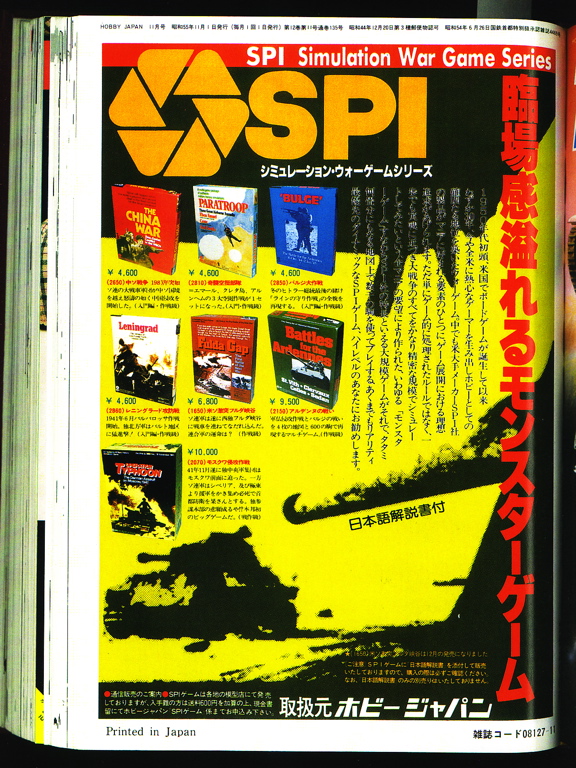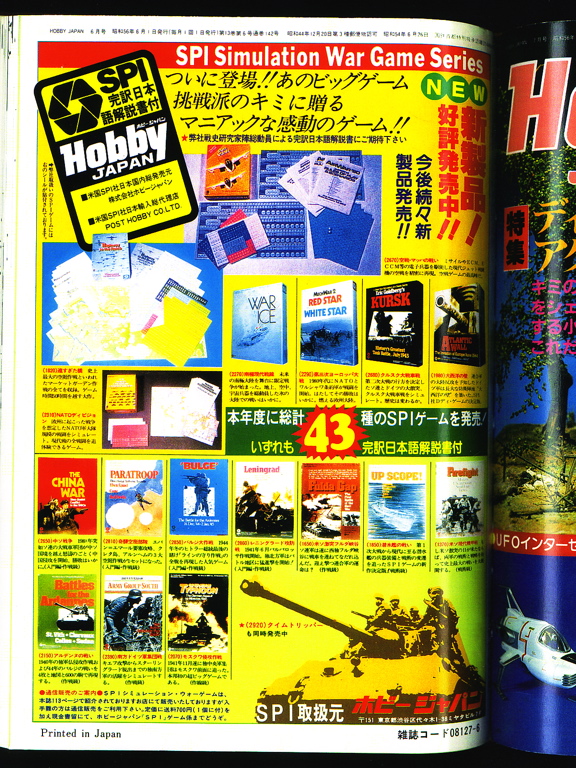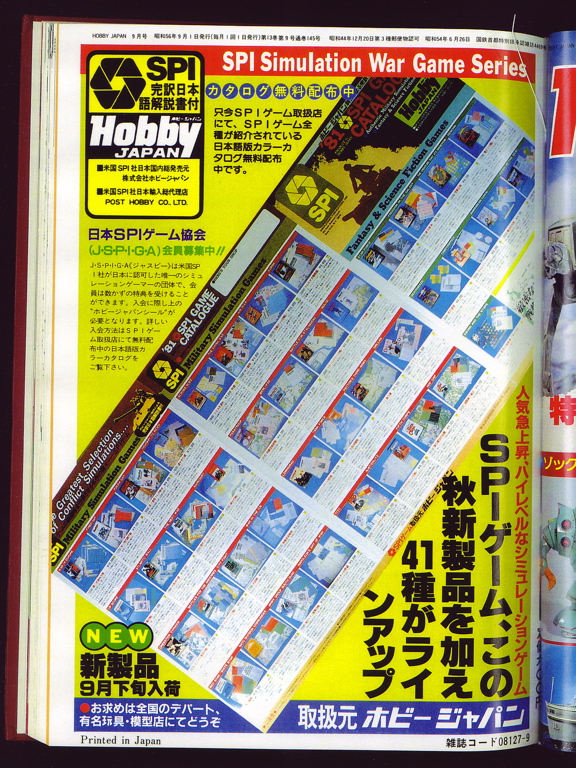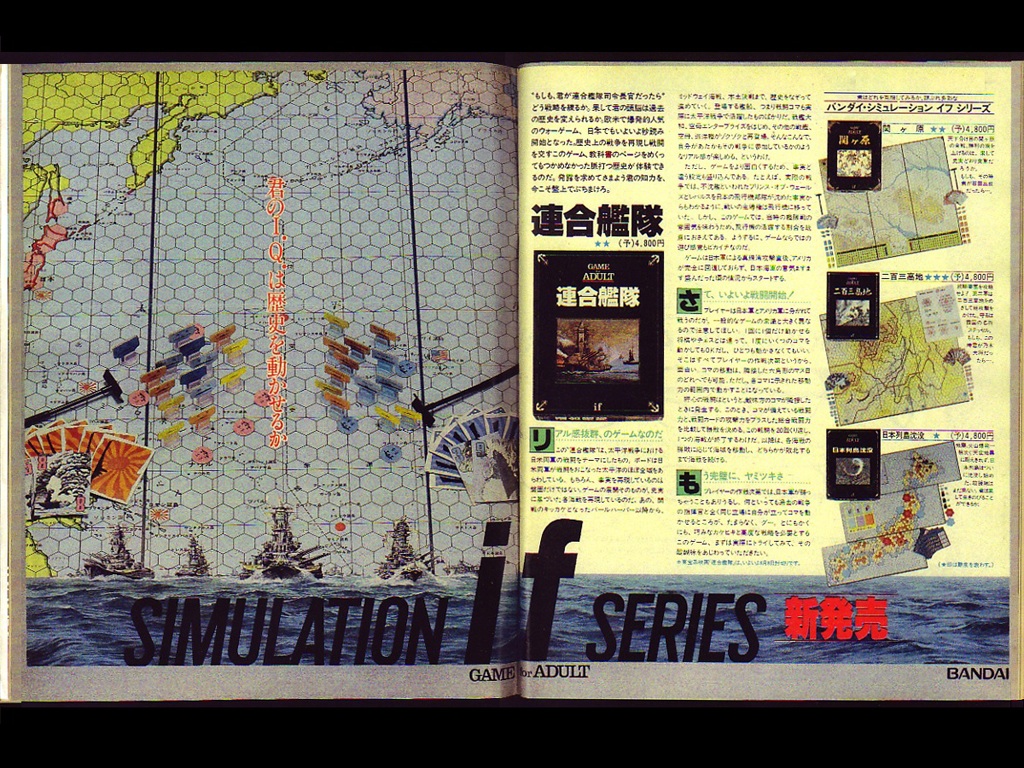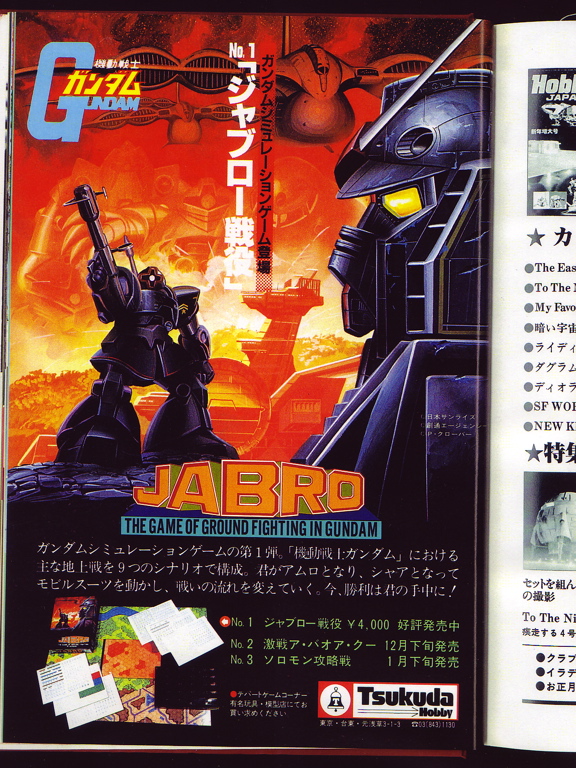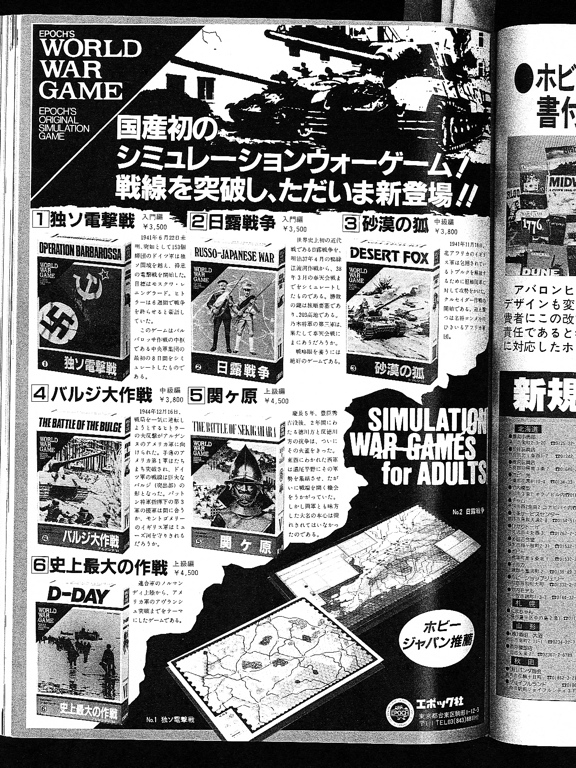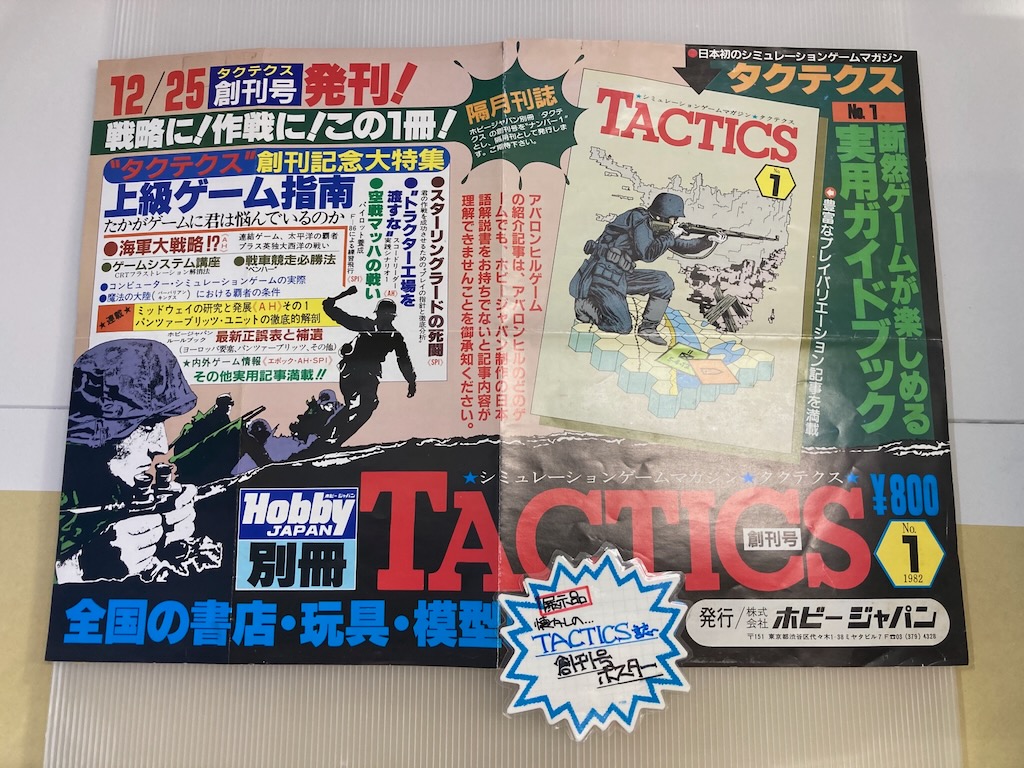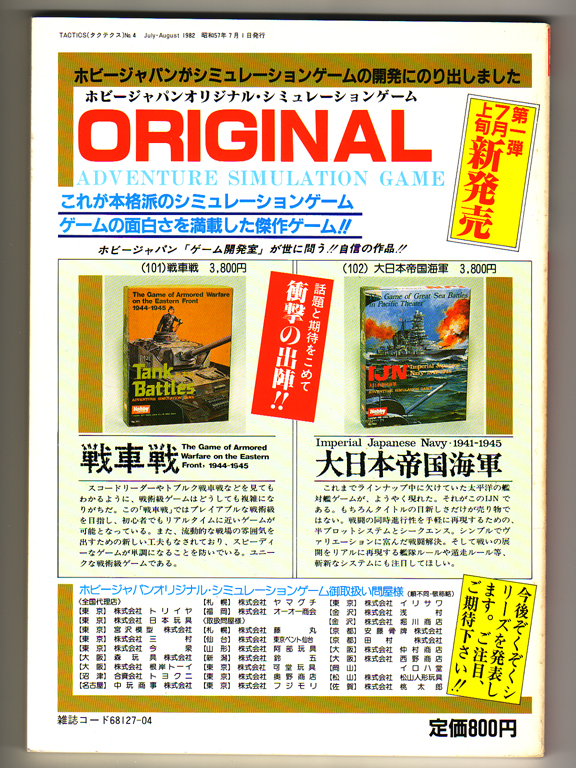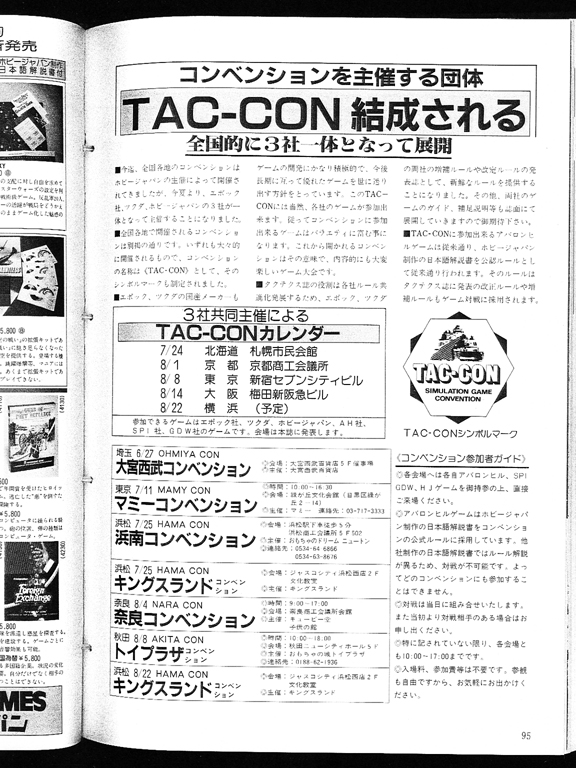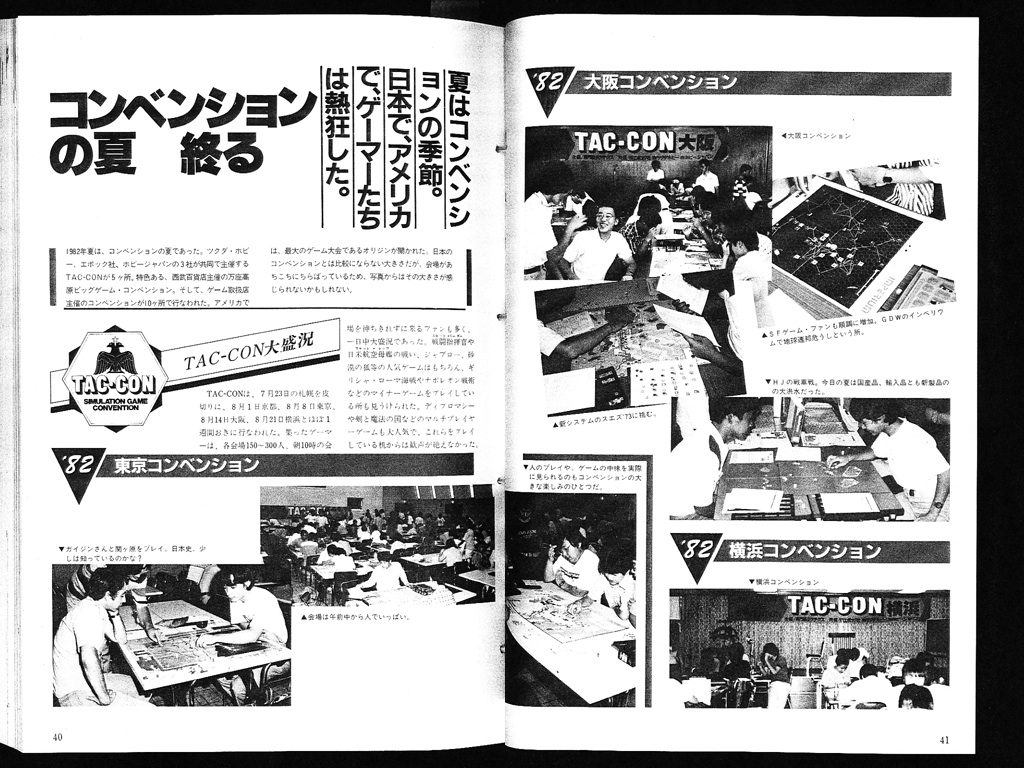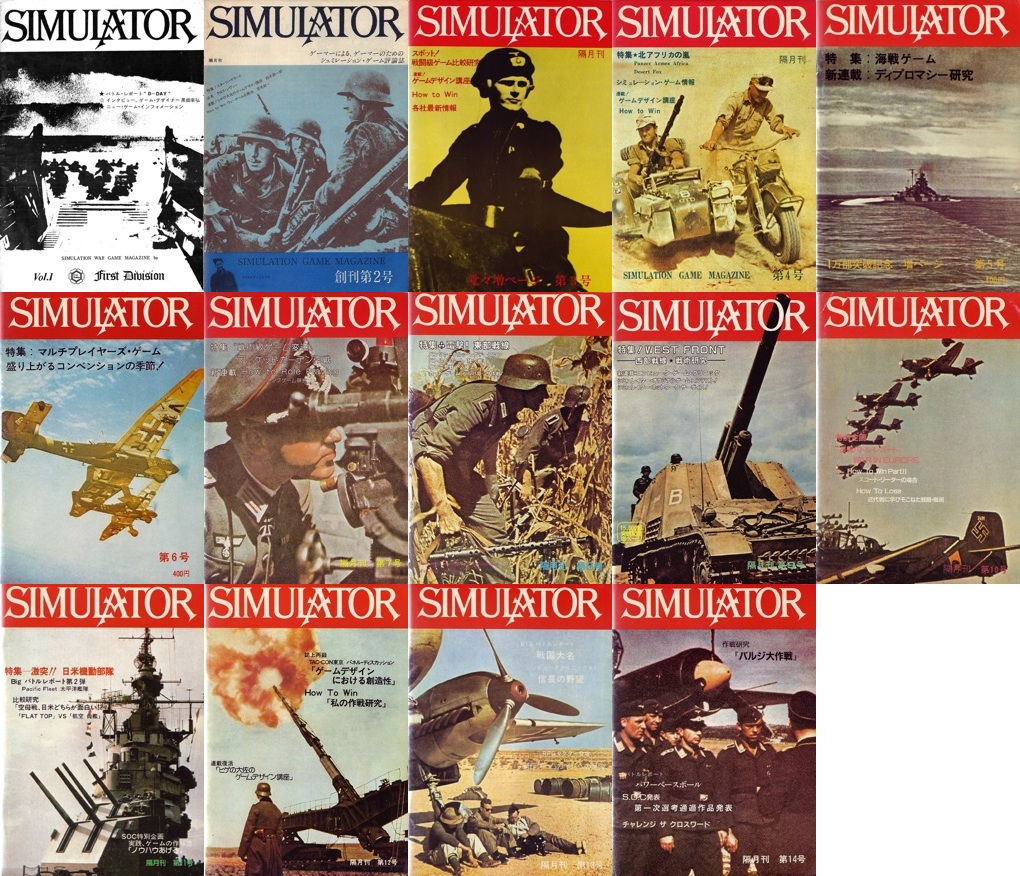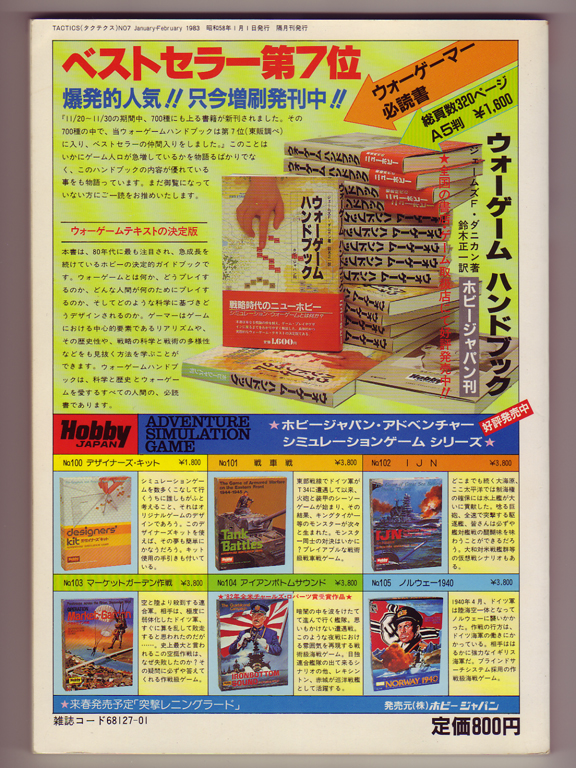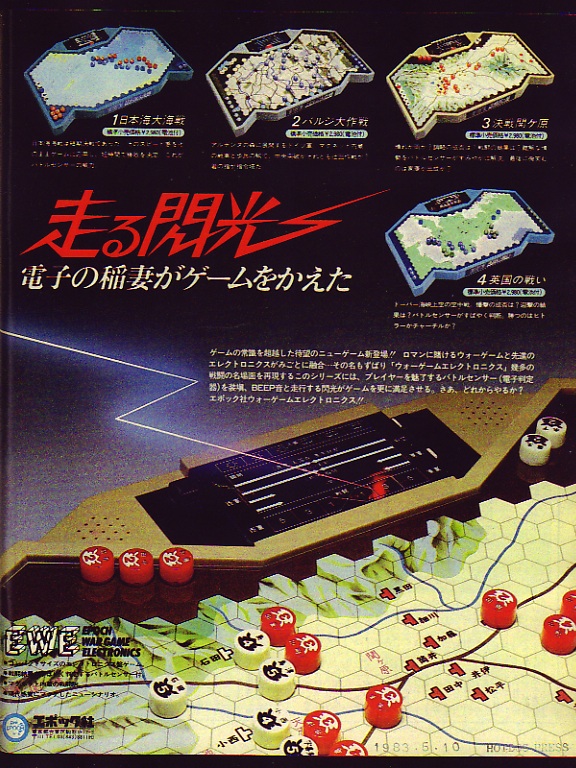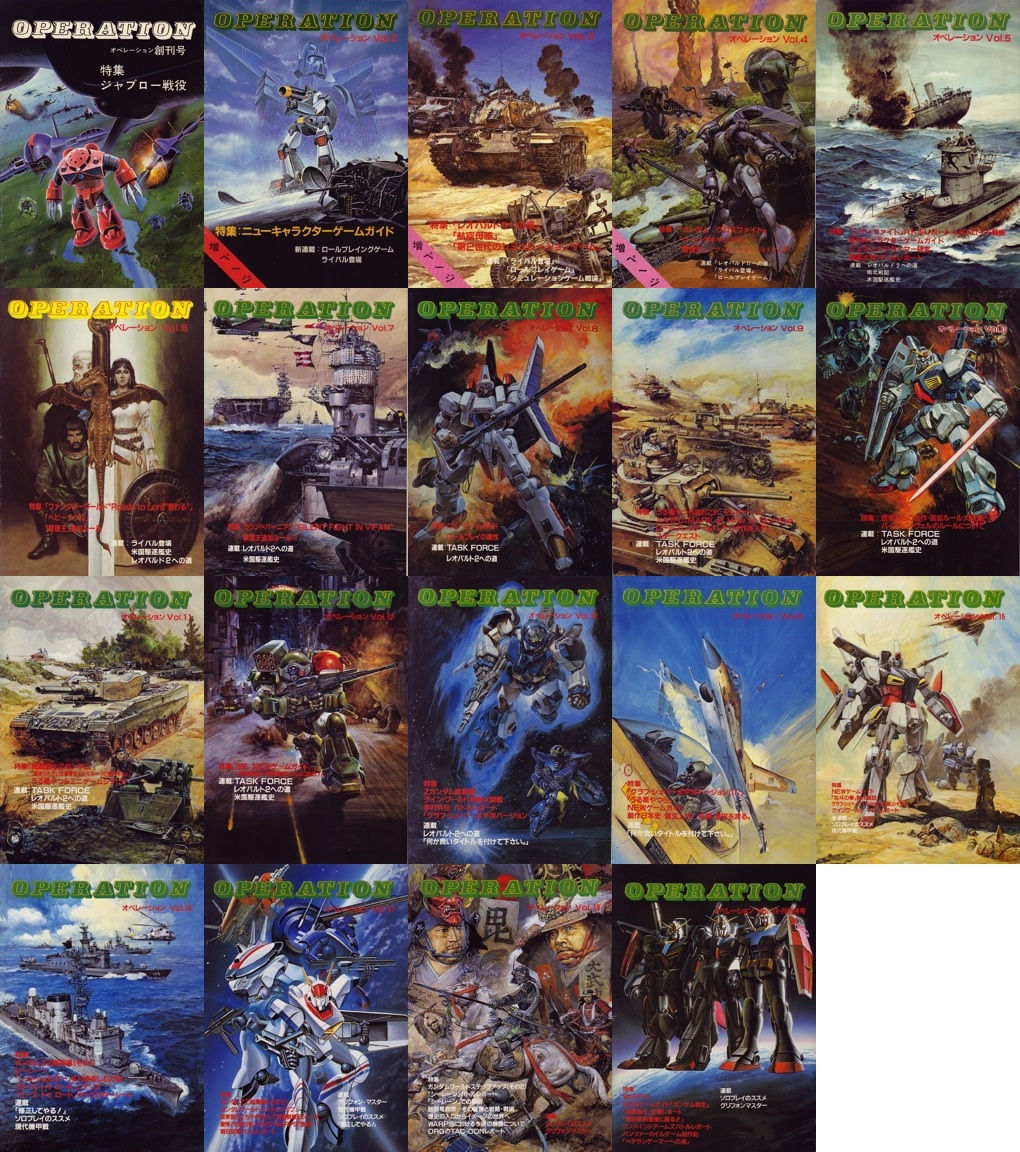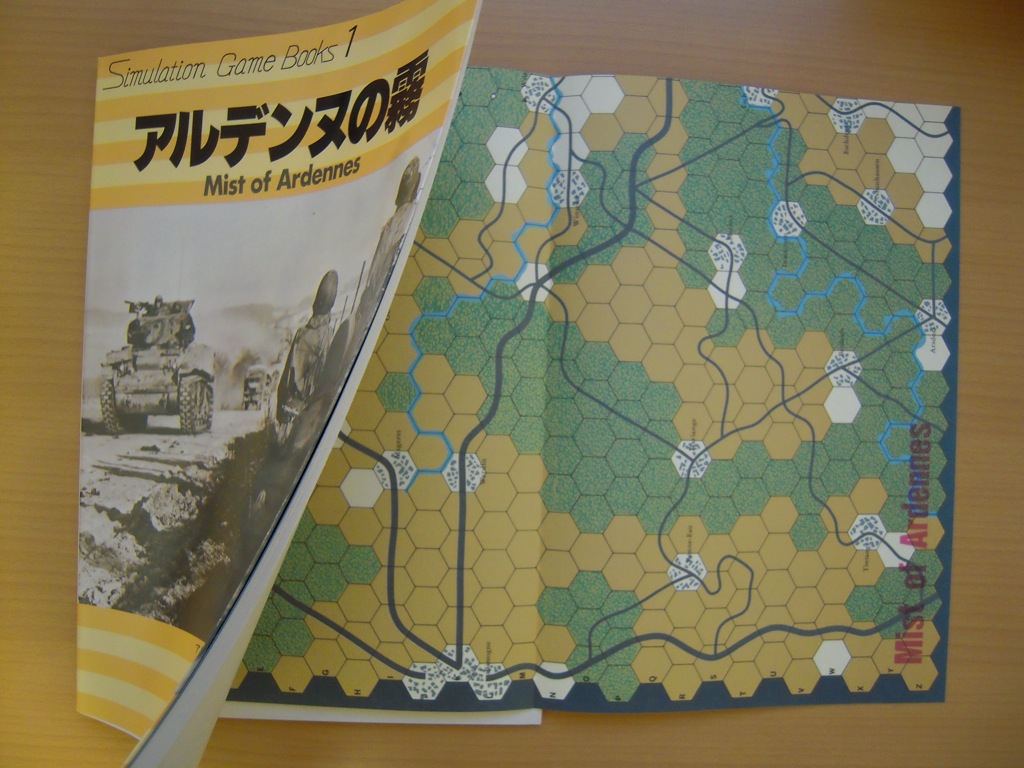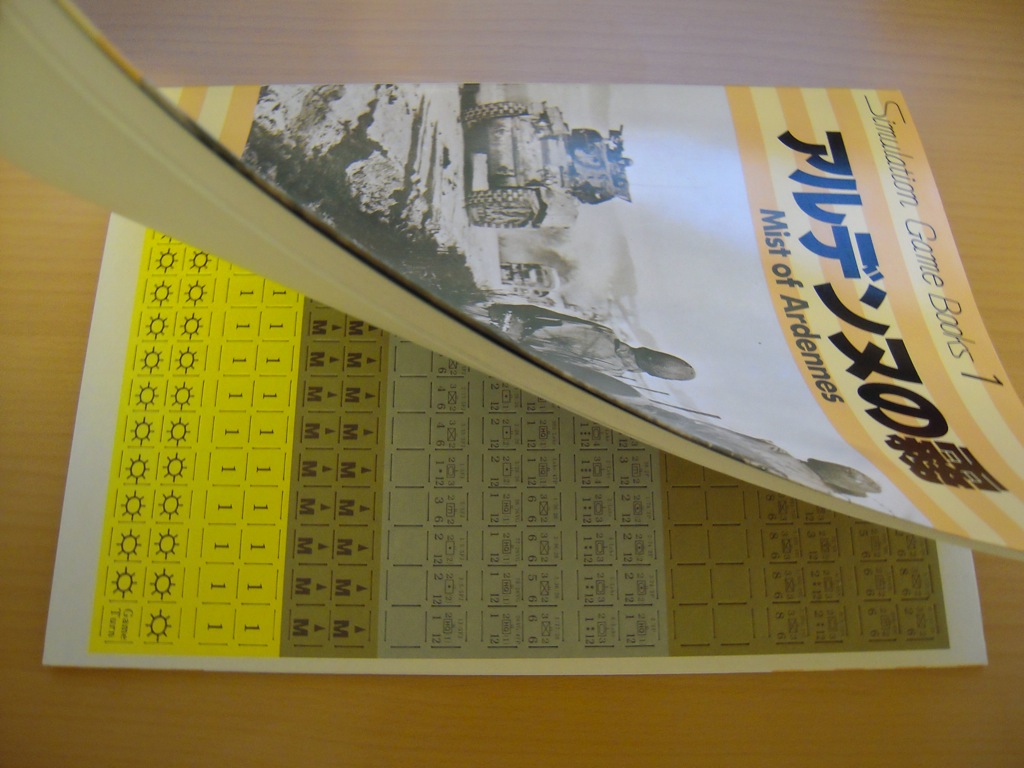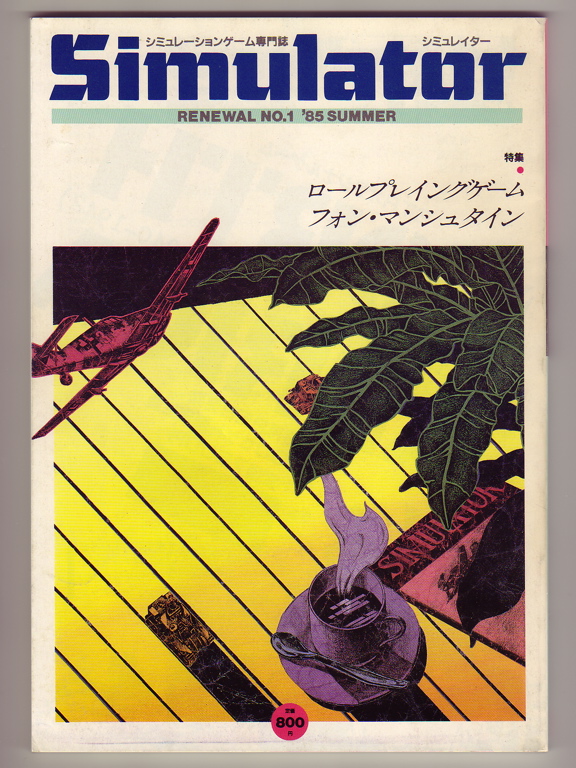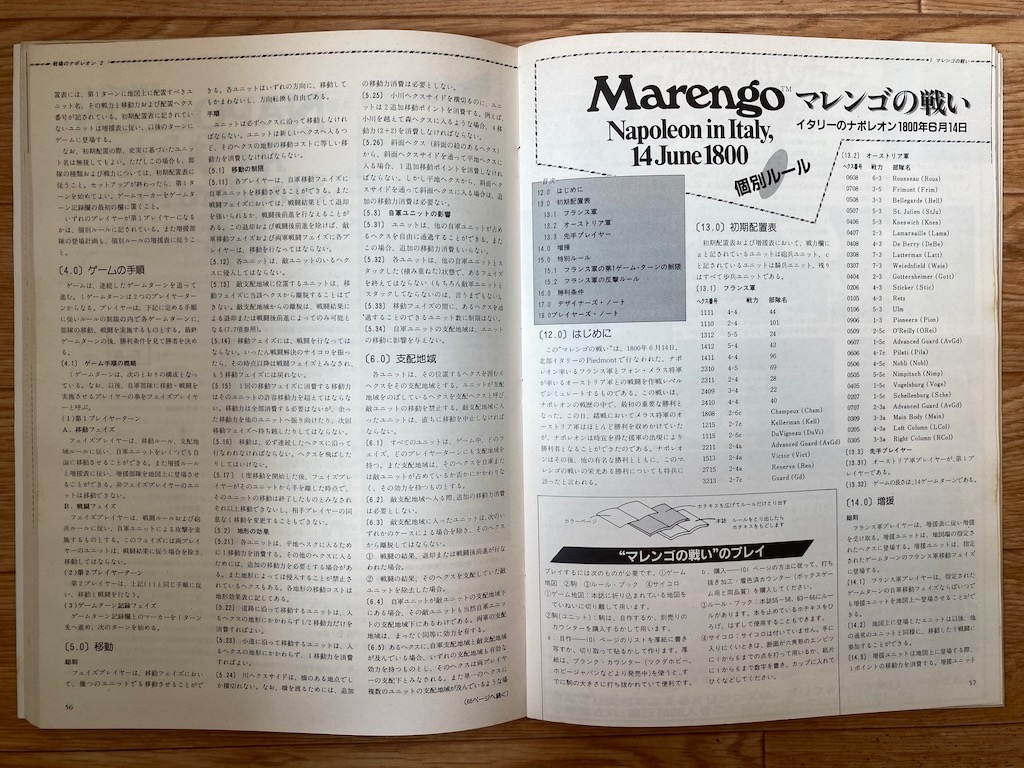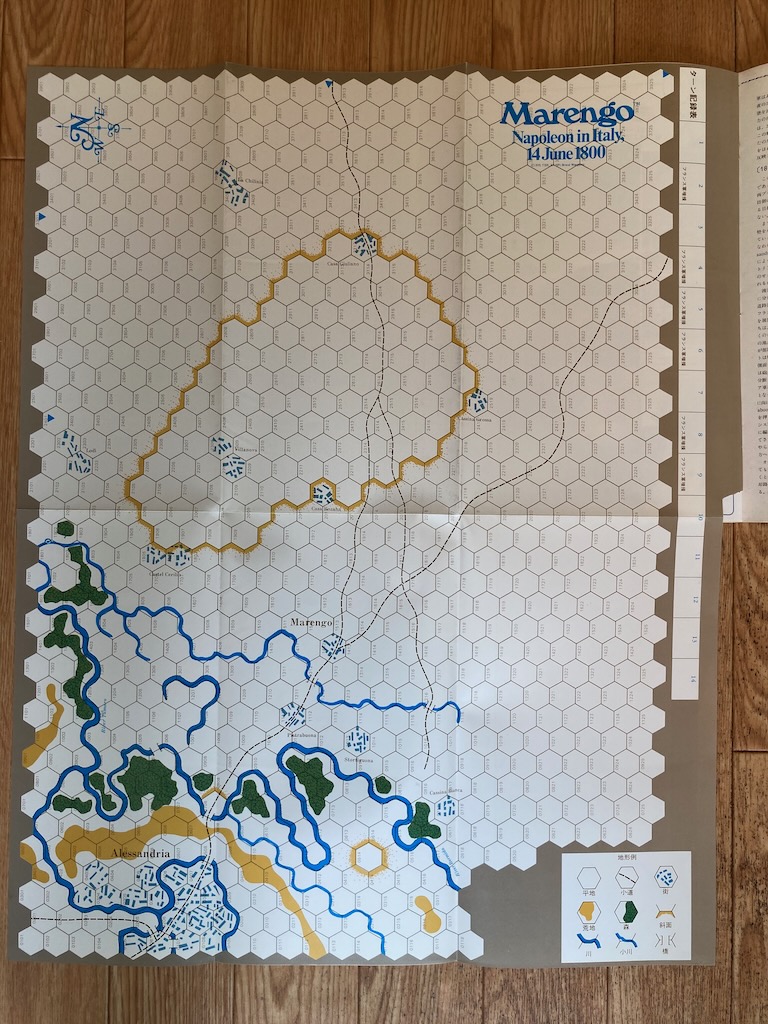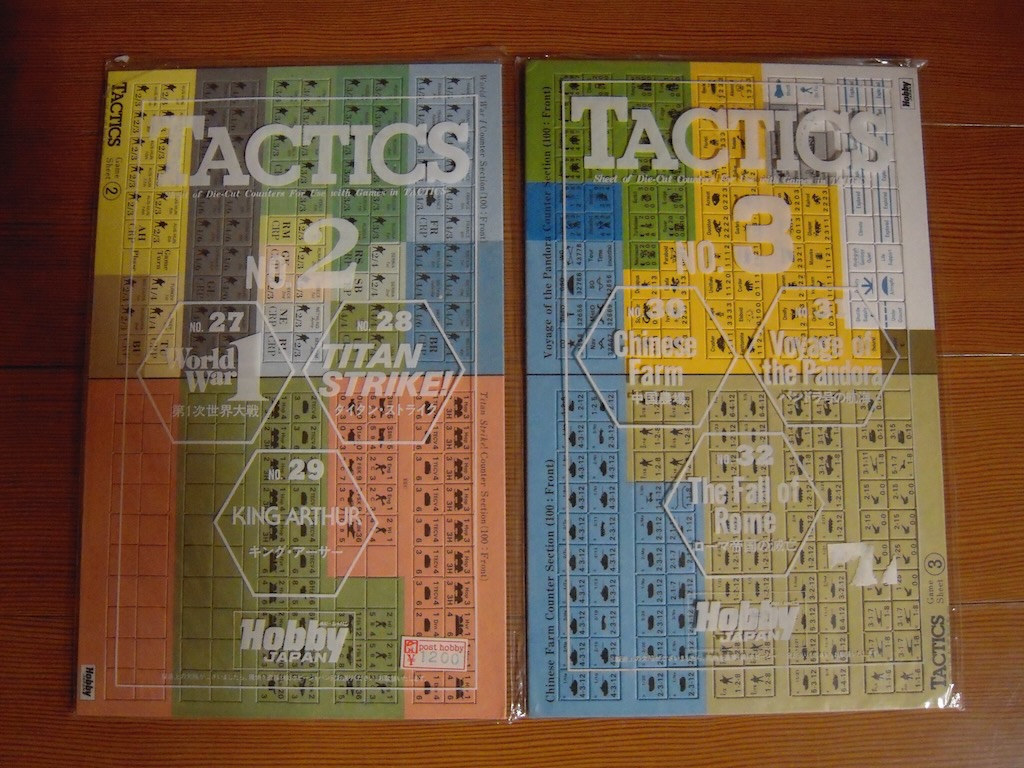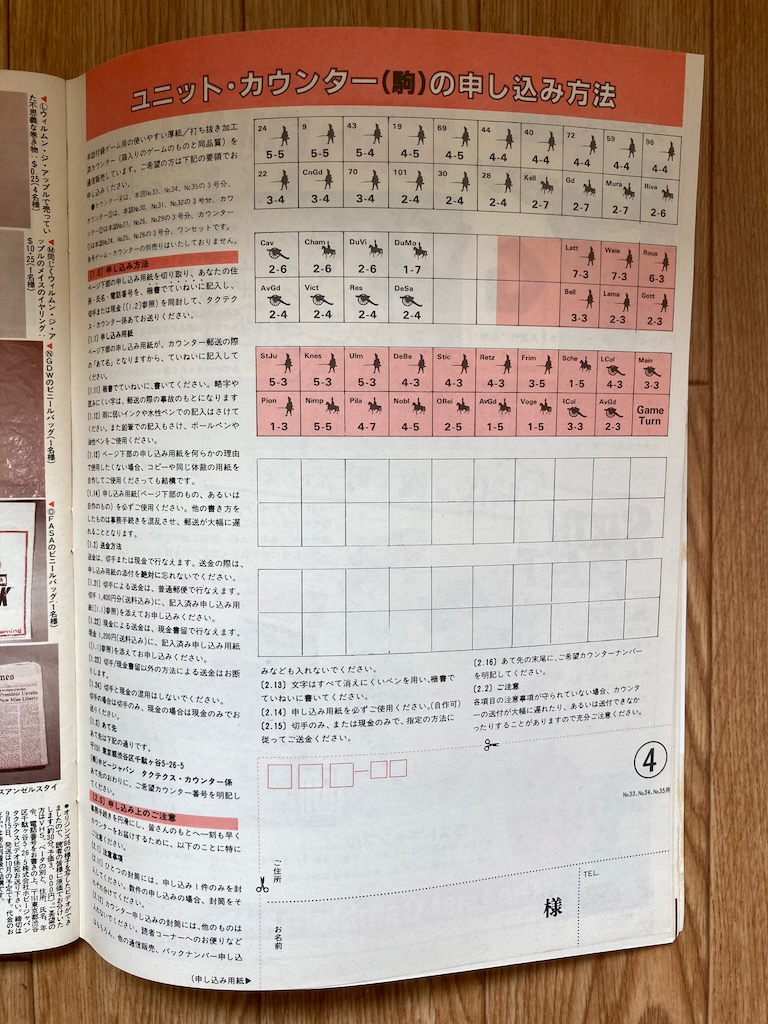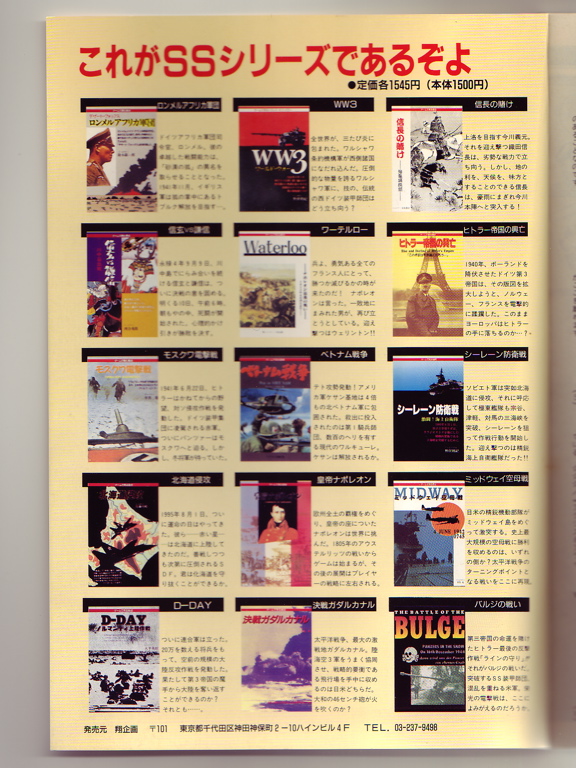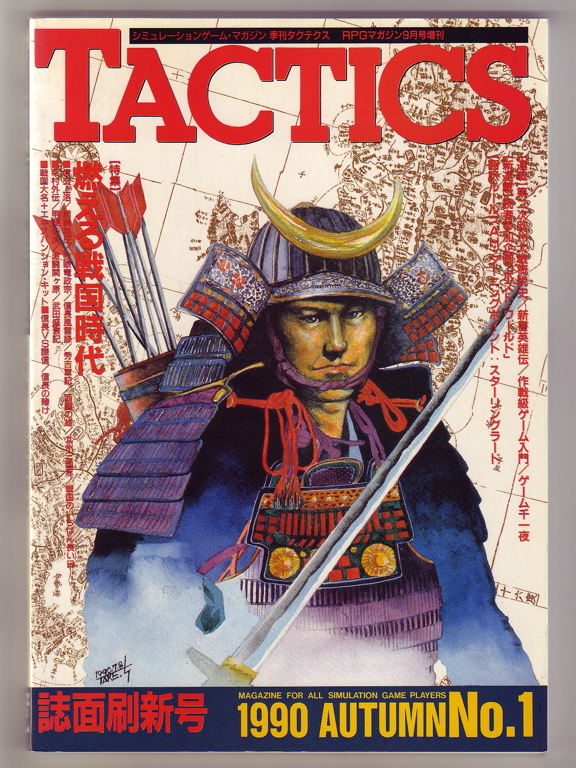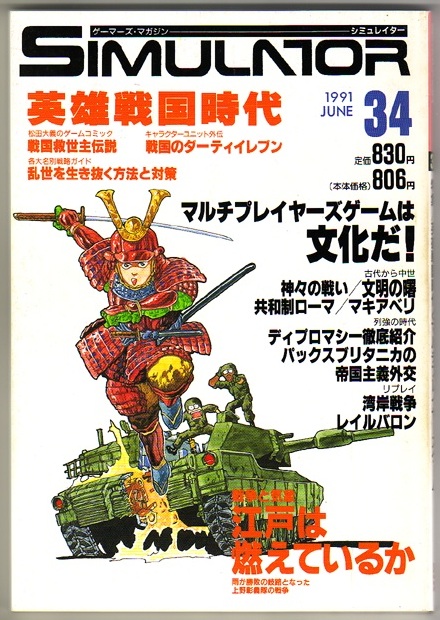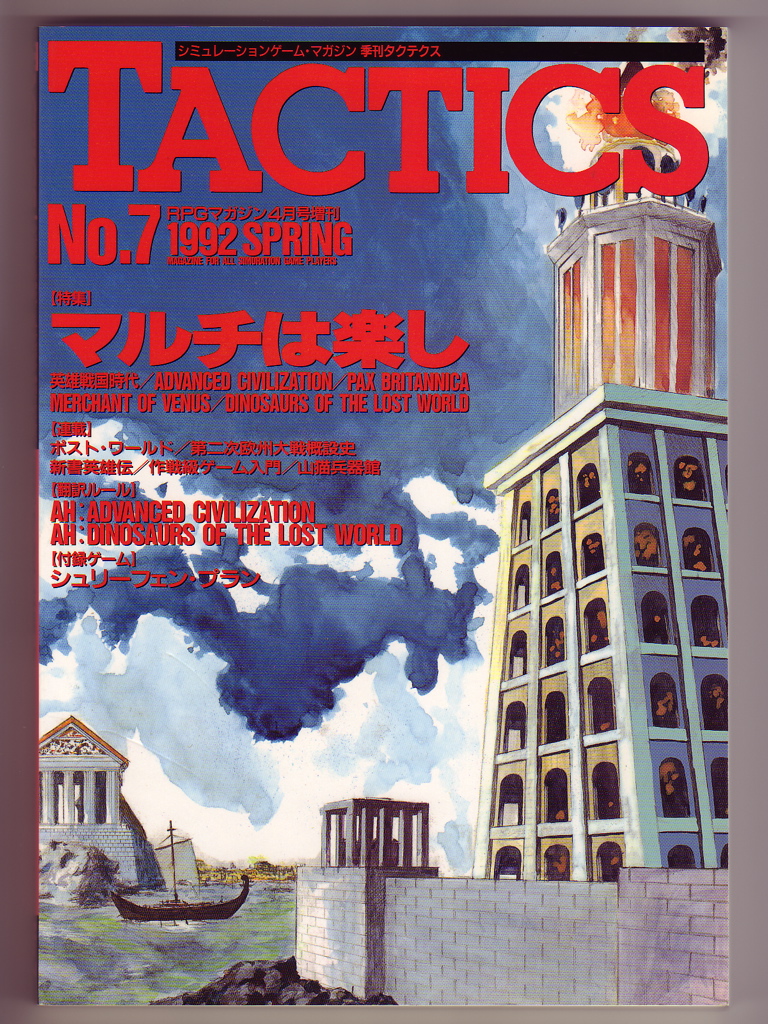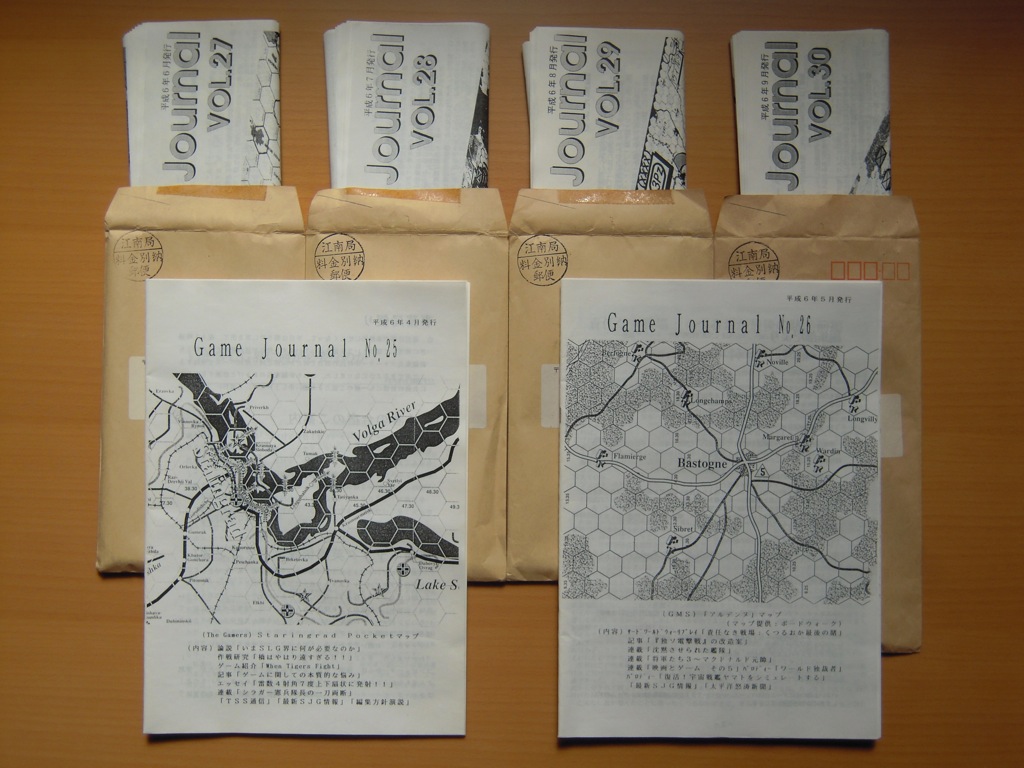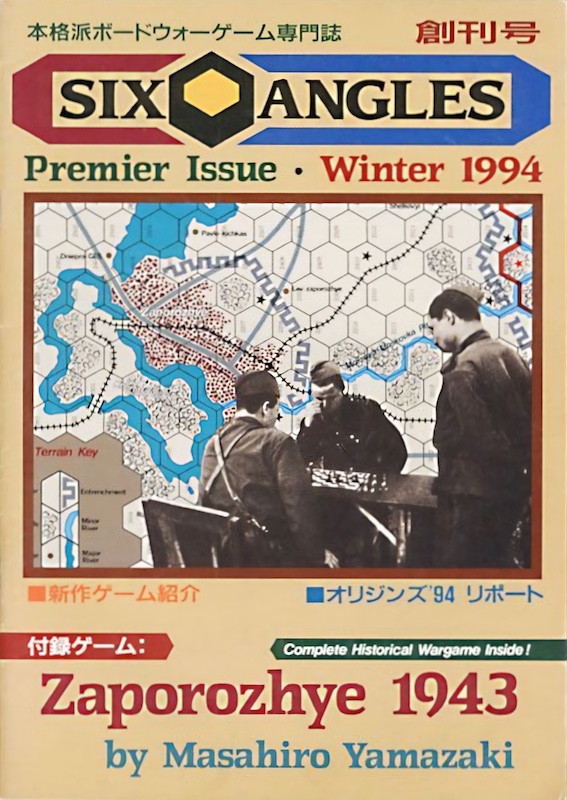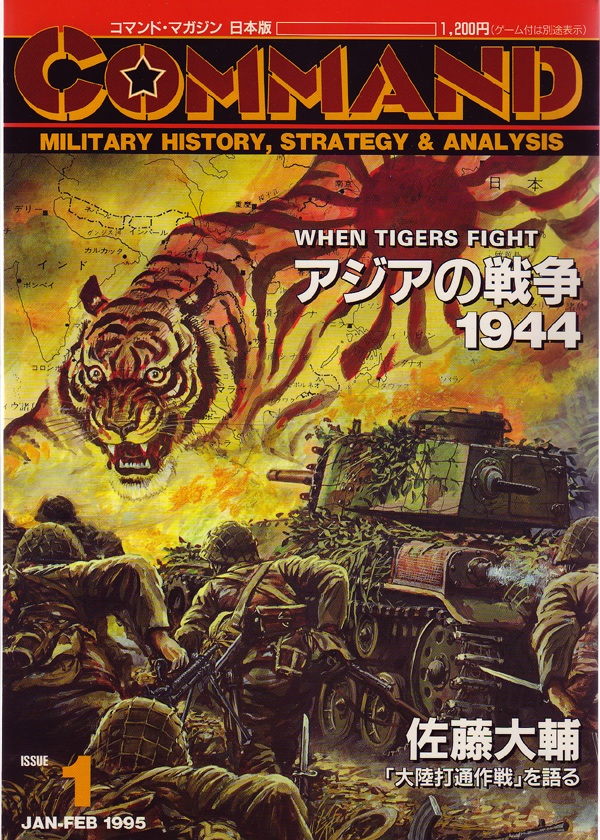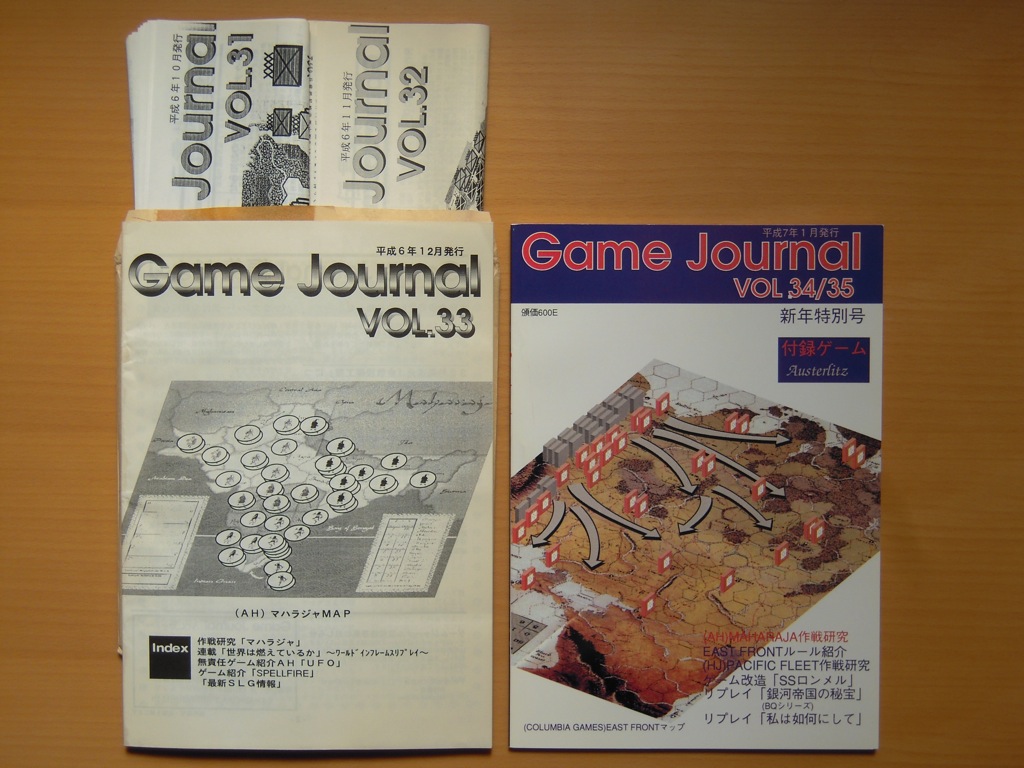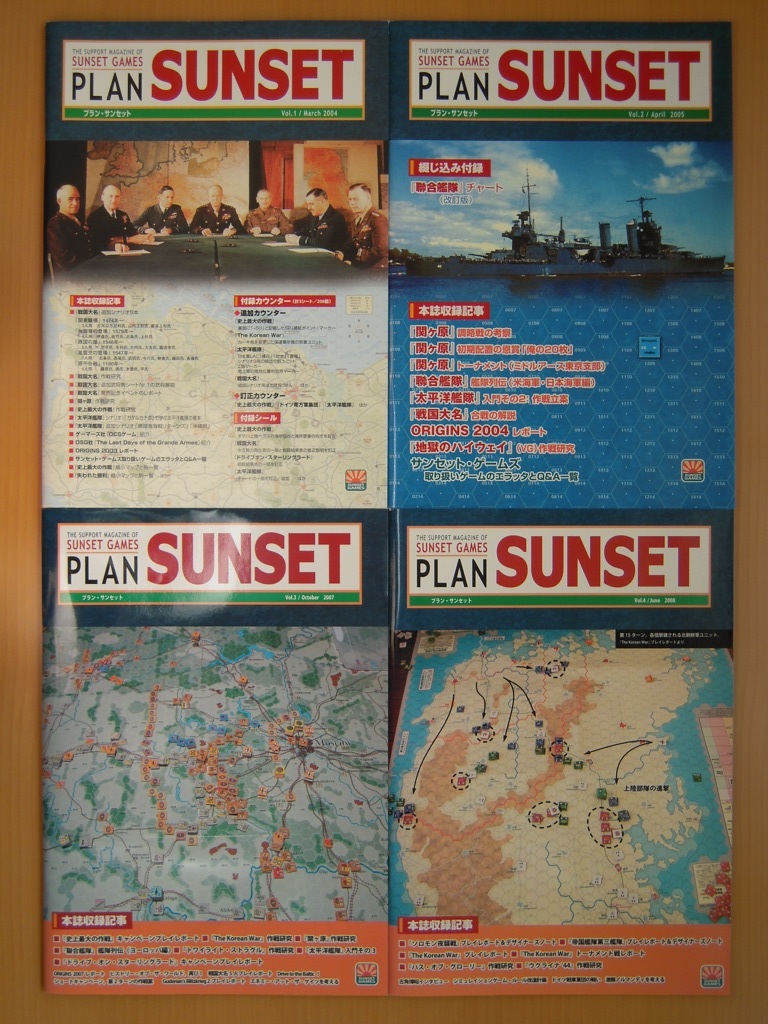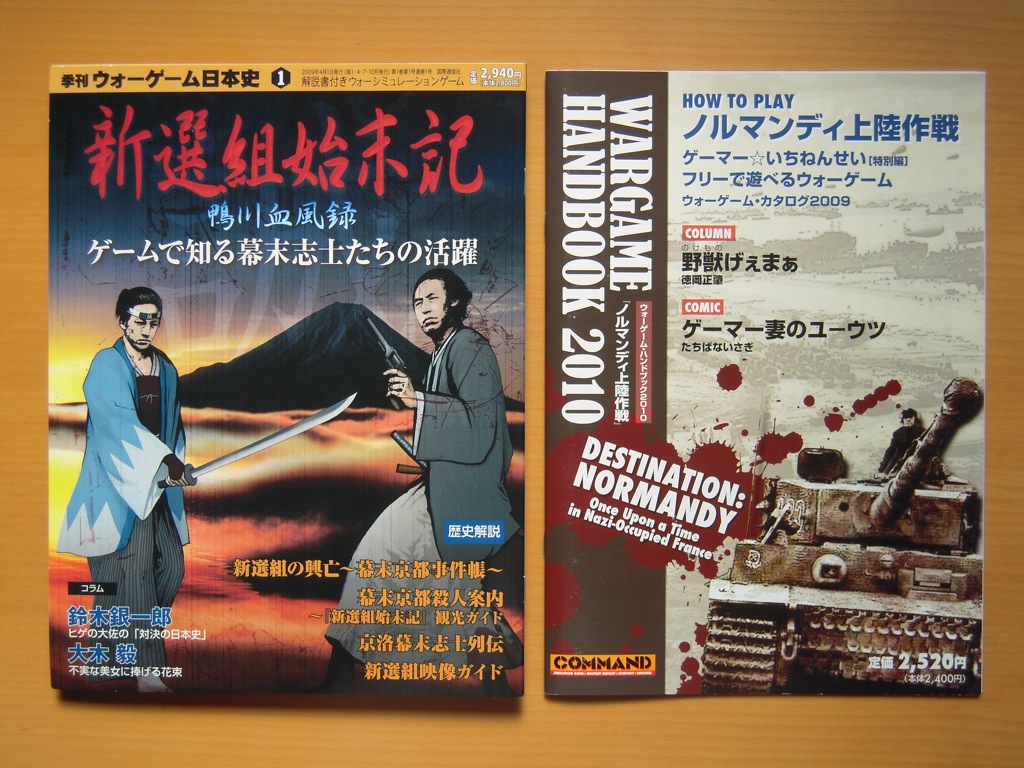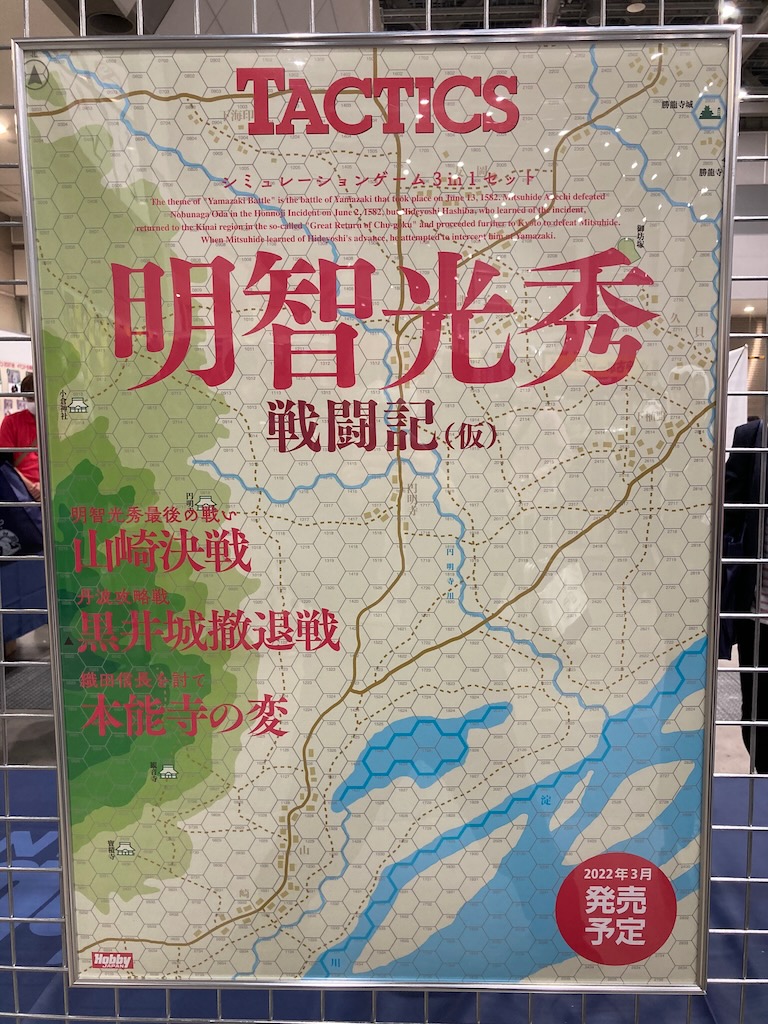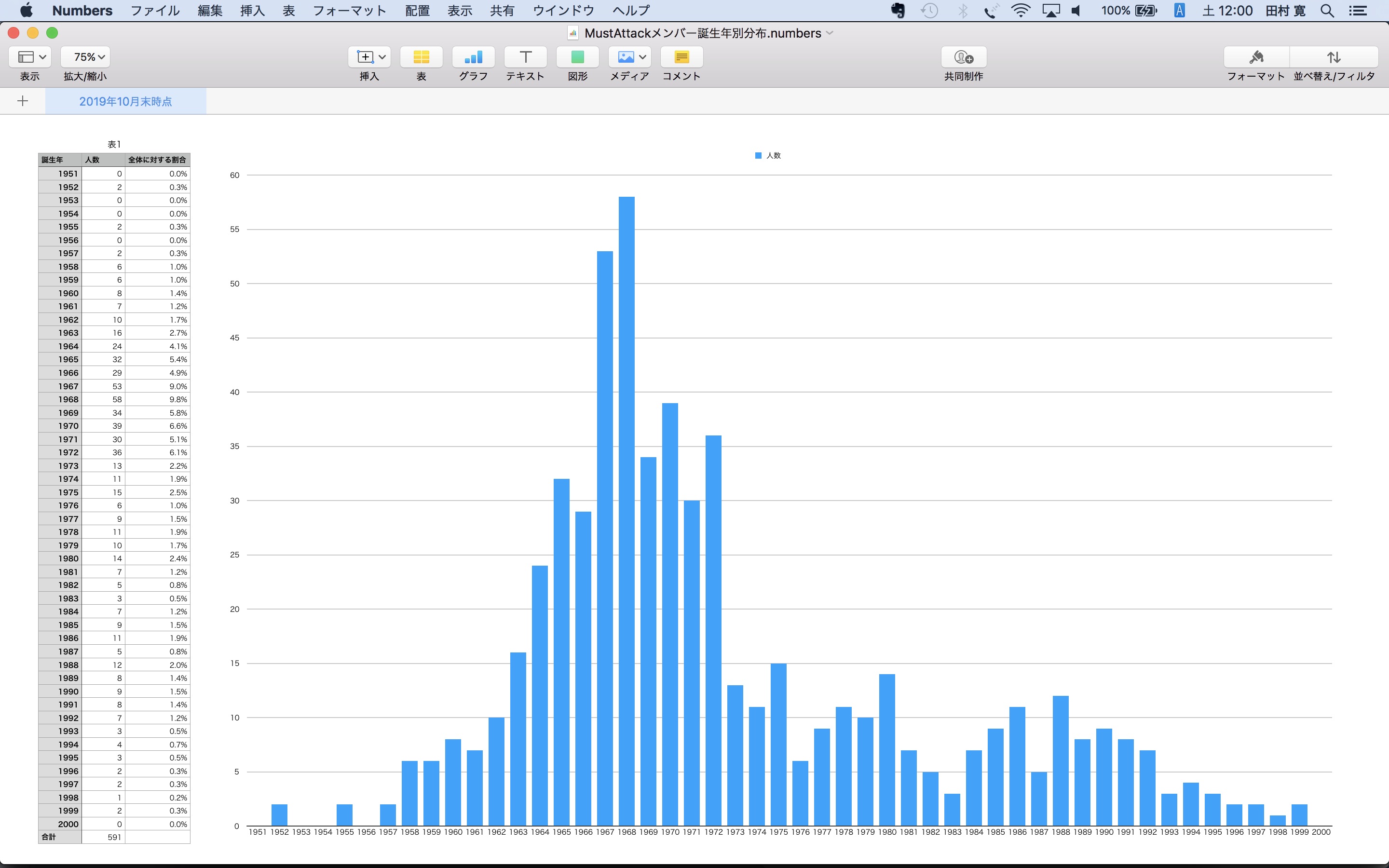Table of Contents
- Preface
- 1972-1981: From Miniature to Cardboard, From Imports to Domestics
- 1982-1991: Too Late and Too Short Boom, Shoddy Overproduction and Decline
- 1992-2001: Restarting from the Rock Bottom, The Net and Indies
- 2002-2011: Returners and Reversal Offensive, Online-Gaming/Blog/SNS
- 2012-2021: Borderless and New Wave, Reconstruction and Challenges
- Postscript
- Bibliographies
- See also
Preface †
"Tabletop wargames as a civilian hobby," which are different from military simulation by professional military personnel, can be divided roughly into two types: "miniature wargames that originated in Europe in the 19th century" and "board wargames that originated in the United States in the 1950s."
Both were played exclusively in Europe and the United States until the 1960s, but in the 1970s, Airfix, a British model maker, published articles related to miniature wargames in the model magazine Airfix Magazine. After the articles were published, both spread outside of Europe and the United States.
Even if limited to Japan, its history has already exceeded half a century, but its progress has never been smooth. I tried to summarize the long and winding road by decade.
1972-1981: From Miniature to Cardboard, From Imports to Domestics †
In the spring of 1972, the April 1972 issue of the model magazine Monthly Hobby Japan published an article "Wargaming with Miniature Models" that introduced miniature wargaming as a way to enjoy after making models.
While English was the official language in Hong Kong and Singapore during the same period, so Airfix Magazine was read directly in those regions, in Japan there was a language barrier, but Ide Takaya, who wrote this article, was working at "Jena," a foreign bookstore in Ginza, at the time, and it is thought that he wrote this article after reading Airfix Magazine.
This article caused a great response from readers, and as a result, the first public demonstration of miniature wargaming in Japan was held in July of the same year in Yoyogi, Tokyo, the location of Hobby Japan's headquarters.
Monthly Hobby Japan August 1972 issue cover and article "Japan's First Open Wargaming"
Since then, miniature wargames had been played all over Japan based on the rules published in Monthly Hobby Japan.
Around the same time, the large toy chain KIDDY LAND (the flagship store is located in Minato City, Tokyo, where there are many embassies, so it had many foreign customers living in Japan) and model stores that originally had business with foreign countries began importing and selling board wargames.
Then in 1975, Hobby Japan also decided to import board wargames made by Avalon Hill from the United States and sell them with Japanese translation rules.
Advertisements for Avalon Hill's board wargames in the April and June 1975 issues of Monthly Hobby Japan
When importing and selling board wargames made by Avalon Hill, Monthly Hobby Japan published articles introducing board wargames several times.
Monthly Hobby Japan June 1975 issue's article "From Local Combat to Total War" and December 1975 issue's article "From Tactics to Strategy"
From these articles, it can be seen that Hobby Japan at the time recognized miniature wargames as "local combat games dealing with micro-tactics," and board wargames as "total war games dealing with macro-strategies." Although, in fact, such a classification was until the 1960s, and board wargames of local combat dealing with micro-tactics were released one after another in a form transplanted from miniature wargames exactly in the 1970s.
And after 1976, the articles related to wargames in Monthly Hobby Japan have become almost articles related to board wargames, and almost no articles related to miniature wargames have been published.
In countries where tabletop wargames are played outside of Japan, both miniature wargames and board wargames are generally played at the same time, but in Japan, Hobby Japan changed from recommending miniature wargames to recommending board wargames in 1975. As a result of the policy change, for about 10 years after that, almost board wargames were played in Japan.
Advertisements for Avalon Hill's board wargames in Monthly Hobby Japan (1976-1980)
To introduce the specific contents of the article, "Avalon Hill Variation," which was serialized from the April issue to the August issue 1977, introduced various variational gameplay of Tactics II, Wooden Ships & Iron Men, PanzerBlitz, Panzer Leader, etc. with modifications to the rules of the original game.
Monthly Hobby Japan April 1977 issue's article "Avalon Hill Variation: Tactics II Modification Plan"
"Let's Enjoy the Avalon Hill Games," which was serialized from the September 1977 issue to the July 1978 issue, introduced play by mail with remote opponents (of course, using paper letters instead of e-mail) and solo play methods.
And "The World of Wargaming," serialized from the August 1978 issue to the May 1981 issue, sometimes featured introductory articles on board wargames.
Monthly Hobby Japan August 1978 issue's article "The World of Wargaming: This is the World of Wargaming!"
These articles were mostly written by members of the "Cadet Club," a wargaming club in Kugahara, Tokyo.
In 1980, Hobby Japan decided to import and sell SPI games in addition to Avalon Hill games.
In the 1970s, Avalon Hill and SPI were two of the biggest board wargame publishers in the United States, but the two companies had very different approaches. Avalon Hill took its time in game development and narrowed down the number of new games it published, and its products were sturdy components with thick maps in a box. In contrast, SPI, in its heyday, released more than 30 new games a year in rapid succession, many of which were packaged in thin plastic trays with cardboard playing piece sheets, rulebooks, and folded soft maps.
SPI's flat tray products had a high risk of being damaged during transportation, so in the past only some retail stores imported and sold them, but Hobby Japan decided to import SPI games, limited to box games only.
Along with the handling of SPI products, Monthly Hobby Japan published articles introducing SPI in three consecutive issues from August 1980 to October 1980. In addition, while the advertisement for the Avalon Hill product was in black and white, the advertisement for the SPI product was printed in full color on the back cover. This shows Hobby Japan's enthusiasm at that time.
Monthly Hobby Japan August 1980 issue's article "SPI Appears!"
Full-color advertisements for SPI's wargames on the back cover of Monthly Hobby Japan (September 1980 issue - September 1981 issue)
On the other hand, these board wargames imported from overseas tended to have only English language rules or poor-quality Japanese translations, and the prices tended to be expensive. In addition, at the end of the 1970s, the exchange rate turned from the strong yen to the weak yen, and the prices of imported board wargames also rose. For these reasons, the demand for domestic board wargames was increasing day by day.
Then in 1981, Bandai, Tsukuda Hobby, and Epoch released domestic board wargames one after another.
A magazine advertisement for Bandai's first wargame Combined Fleet (and games also belonging to the "Bandai if Series")
A magazine advertisement for Tsukuda Hobby's first wargame Mobile Suit Gundam: Jabro
A magazine advertisement for Epoch's "World Wargame Series"
However, these domestic games were not always welcomed unconditionally. It is undeniable that board wargames had a certain aspect of being accepted as a kind of eighth grade syndrome item, as "America's cutting-edge culture" in 1970s Japan. In fact, POPEYE, a major fashion magazine in Japan, sometimes introduced board wargames in articles as "America's cutting-edge culture."
As a result, some of the people who had been playing many Avalon Hill and SPI games since before the birth of domestic wargames made eighth grade syndrome worse and looked down on domestic wargames.
Bandai's games used cards instead of dice for combat resolution, standed cardboard playing pieces vertically on plastic stands, and included special mini rake for moving such playing pieces, but because of these gimmicks and gadgets, they were often considered to be toys for children. Ironically, Bandai's game boxes were labeled "GAME for ADULT" (perhaps to distinguish them from conventional children's games).
Tsukuda Hobby's games were mainly tactical-level games, with each playing piece representing a single vehicle/vessel/aircraft because the main designer Okada Atsutoshi was originally a miniature wargamer, but there was a tendency to emphasize precision and put game balance and playability second. Also, many of Tsukuda Hobby's games were copyrighted anime titles such as Gundam, Xabungle, Dunbine, etc., but some historical wargamers looked down on Tsukuda Hobby's anime games just like some scale modelers (who only made models of real things) looked down on Gunpla during the first Gunpla boom.
Epoch's games were developed by the Rec Company, which was co-founded by Suzuki Gin'ichiro and Kuroda Yukihiro. Both of them attached great importance to development testing for game balancing, and in fact, the playability of the games was higher than Bandai's and Tsukuda Hobby's, since playtests were repeated dozens of times at Rec Company. However, the game's appearance and the graphic design of its components were inferior to Bandai's and Tsukuda Hobby's. The fact that Bandai's first magazine ad was a full-color two-page spread and Tsukuda Hobby's first magazine ad was a full-color one-page, while Epoch's first magazine ad was a black-and-white one-page, shows their disregard for such visual images and first impressions.
Nevertheless, the Japanese board wargame market expanded rapidly with the successive release of these domestic board wargames, and even department stores and toy stores that had not previously dealt in imported board wargames began to sell domestic board wargames.
In response to this rapid expansion of the domestic market, Hobby Japan launched a bimonthly wargaming magazine Tactics at the end of 1981 as a separate volume of Monthly Hobby Japan.
Thus, in the decade since "tabletop wargames as a civilian hobby" landed in Japan, domestic games and specialized media were born.
1982-1991: Too Late and Too Short Boom, Shoddy Overproduction and Decline †
The Japanese tabletop wargame boom, which had finally taken off with the release of domestic games, however, suddenly hit a snag the following year in 1982. SPI went bankrupt in the United States, and new imports became stagnant.
SPI had supported the rise of wargaming in the United States during the decade of the 1970s with a series of new game systems and progressive initiatives such as the introduction of the Apple II for rules writing, in contrast to Avalon Hill, which was conservative for better or worse, but with the dawn of the 1980s SPI left the scene, and what's more, the copyright on the games was taken over by TSR, publisher of the world's first role-playing game, Dungeons & Dragons. This event symbolized the decline of wargaming in the United States, the birthplace and largest market for board wargames, and the rise of RPGs as an emerging force.
Then in 1983, Nintendo released the Famicom. This marked the beginning of an era of drastic change in the world of entertainment.
From 1985, when Super Mario Bros. was released, to 1986, when Dragon Quest was released, the Famicom console sold explosively. Among those who entered middle school after this time, i.e., those born after 1973, the number of those who had dabbled in board wargames had drastically declined.
While board wargames continued to flourish in the United States during the decade of the 1970s, the boom in Japan was too late and too short. As a result, Japan's tabletop wargamers had an uneven age distribution, with a projecting number of those born in 1967-68, who were in the first or second year of middle school in 1981 when the first domestic games were released. The bad effects would surface in the 1990s, but for the time being, let's turn the clock back to 1982.
In the summer of 1982, Hobby Japan, which until then had been devoted to importing and selling overseas wargames, also entered the development of domestic games and released Tank Battles and IJN: Imperial Japanese Navy, 1941-45.
Advertisement of Tank Battles and IJN: Imperial Japanese Navy, 1941-45 on the back cover of Tactics #4
Also in the summer of 1982, Hobby Japan newly began importing and selling GDW games.
In addition, in the summer of 1982, a large-scale convention "TAC-CON" co-sponsored by Hobby Japan, Tsukuda Hobby, and Epoch was held throughout Japan during the school summer vacation.
In the early autumn of 1982, Simulator was launched as a new wargaming magazine. Originally, it was launched as a bulletin for the "First Division," a nationwide wargaming club, but it was edited by Suzuki Kazunari, who is the son of Suzuki Gin'ichiro (and became involved in the Megami Tensei series later), and the editorial office was located in the same place as that of the Rec Company, it was effectively the Rec Company's bulletin.
In the late autumn of 1982, Hobby Japan published a Japanese translation of The Complete Wargames Handbook, a comprehensive guide to wargaming published in the United States in 1980 by James F. Dunnigan, founder of SPI and designer of more than 100 wargames.
Advertisement for the Japanese edition of The Complete Wargames Handbook on the back cover of Tactics #7
In 1983, Epoch released "Epoch Wargame Electronics (EWE)" separately from the "World Wargame Series." It was developed in-house by Epoch, and the Rec Company was not involved. EWE was a series of mini-games consisting of a plastic and steel game board with a built-in electronic dice, and magnetic playing pieces, and the rules were simpler than those of the World Wargame Series.
In the spring of 1983, Tsukuda Hobby launched its own game support magazine Operation. As a result, there were three magazines on tabletop wargaming in Japan.
In the autumn of 1983, Ad Technos newly entered the domestic wargame publishing industry. Ad Technos staff originally belonged to Bandai's advertising design team and designed wargames in addition to Bandai's advertisements, but they became independent and started publishing their own games. The first six games were published in booklet form, and from the seventh game, Napoleon’s Russian Campaign: Borodino & Smolensk, the company began to publish in boxed game form.
Map and playing piece sheet of Ad Technos' first in-house product Mist of the Ardennes
In the spring of 1984, Hobby Japan signed a license contract with Avalon Hill to publish the complete Japanese language versions of games from Avalon Hill and Victory Games (a subsidiary of Avalon Hill, made up of former SPI staff).
Also in 1984, Suzuki Gin'ichiro established the editorial production company "Sho Kikaku" in Jimbocho, Tokyo, and the following summer in 1985, Simulator was renewed by Sho Kikaku's editing and publishing.
In the late autumn of 1985, Hobby Japan renewed its bimonthly Tactics into a monthly magazine. The number of color pages increased, the format also expanded from perfect-bound JIS B5 size (182mm × 257mm, 7+1⁄6in × 10+1⁄8in) to saddle-stitched ISO A4 size (210mm × 297mm, 8+1⁄4in × 11+17⁄24in), and in addition, a "fold-in game" was added to each issue. The fold-in game was a game with rule pages and a full-color map folded into the middle of the saddle-stitched binding, and could be removed from the magazine by unfolding the staples of the saddle-stitched binding. A set of cardboard playing piece sheets for about three issues was sold separately, but a list of playing pieces was also included in the magazine, so it was also possible to create one's own.
Japanese rules and map of Napoleon at War: Marengo included in Monthly Tactics #34
Cardboard playing piece sheets sold separately for the fold-in games of Monthly Tactics
Mail order form for separately sold playing piece sheets and list of playing pieces from Napoleon at War: Marengo in Monthly Tactics #34
In the mid-1980s, the tabletop wargaming community in Japan seemed to be developing steadily at first glance. It was around this time that "simulation game clubs" were established at universities around Japan, but this was only because those born in 1967-68, who were in the first or second year of middle school in 1981 when the first domestic games were released, had entered university. Actually, the Famicom had become overwhelmingly popular among elementary and middle school students since that time, and the community was failing to attract newcomers. In addition, there was a lot of shoddy production of games.
In 1984, Suzuki Gin'ichiro serialized "Colonel Mustache's Game Design Course" in Simulator. In that serial, he introduced a case in which the American publishing industry fell into the trap of shoddy overproduction of mafia novels after The Godfather became a huge hit, which resulted in the decline of the mafia novel genre itself, and warned that the same thing might happen in the Japanese wargame industry. The same thing has happened as he warned.
The main culprits in this shoddy overproduction were Tsukuda Hobby and Ad Technos. In the case of Tsukuda Hobby, copyrighted anime games had to be released in time for TV broadcasts and movie screenings, and the time constraints for game development were severe. As a result, the quality of Tsukuda Hobby's games, which originally tended to sacrifice playability to give priority to detail, declined further.
In the case of Ad Technos, production management collapsed due to the large scale of development titles. Ad Technos was publishing more big games with more playing pieces and more maps, such as Red Sun Black Cross series based on the theme of hypothetical World War III between Nazi Germany and the Empire of Japan, and the SDF series based on the theme of hypothetical warfare in which the Self-Defense Forces intercept Soviet Army landing in Hokkaido (connectable trilogy of Seventh Armored Division, Northern Army and Fifth Division). As a result, Ad Technos was unable to manage the progress of game development.
In 1986, Bandai withdrew from publishing wargames. In the autumn of 1987, Hobby Japan began publishing even-numbered issues of Monthly Tactics as special TRPG issues and odd-numbered issues as special wargame issues. In effect, Tactics as a wargaming magazine reverted to a bimonthly publication.
At the end of 1987, Tsukuda Hobby's Operation ceased publication. Then, in 1988, Ad Technos went bankrupt.
Suzuki Gin'ichiro worried about the shrinking domestic market, and decided to publish a series of low-priced wargames from Sho Kikaku in order to acquire new wargamers. The series was called the "SS Series," namely Small-size Simulation Series, and its publication began in the autumn of 1988. However, the stronghold of the Famicom was high, and the following year in 1989, a bunkobon TRPG Sword World, which was cheaper than the SS Series, was released, and the SS Series could not compete at all in terms of price.
In 1990, Hobby Japan launched a new monthly magazine RPG Magazine, and Tactics was relaunched as a quarterly extra issue of RPG Magazine. The format returned to perfect-bound JIS B5 size, all pages except the cover became in black and white, and there were no more fold-in games.
In 1991, Sho Kikaku's Simulator ceased publication. No new games were published anymore, including the SS Series and the rest. Epoch also withdrew from publishing wargames.
As mentioned above, many Japanese tabletop wargamers were born in 1967-68, when the first domestic games were released in 1981, they were in the first or second year of middle school. In the early 1990s, those 1967-68 generation graduated from university and got employed, and as a result, the domestic market shrank rapidly.
1992-2001: Restarting from the Rock Bottom, The Net and Indies †
In 1992, Hobby Japan's Quarterly Tactics also ceased publication. The three specialized magazines that existed at its peak were all gone.
Hobby Japan switched to TRPGs, and Tsukuda Hobby also withdrew from the game business in 1992. Domestic board wargames on a commercial level were no longer published at all. Some turned from game developers to writers (e.g., Fukuda Makoto and Sato Daisuke), some devoted themselves to their original main job as researchers (e.g., Takanashi Shun'ichi and Ohira Hideki).
Although there had been coterie magazines and coterie games by amateur wargaming clubs since the 1970s, there was no coterie magazine that was published regularly and widely read throughout the country. Therefore, there was an urgent need to reestablish a "medium for tabletop wargamers from all over the country to interact with each other," which had been the role of commercial magazines.
In the first half of the 1990s, it was still the eve of the lifting of the ban on commercial use of the Internet, and Koshida Ichiro, who was the president of the Cadet Club, was positively active in the wargaming conference room in the game forum (FGAME) of NIFTY-Serve, a major computer communication service company (and Japanese distributor of CompuServe). However, NIFTY-Serve was charged and could only be paid by credit card, so not everyone could participate.
Therefore, Nakamura Tetsuya, who had won the second prize in an original game contest held by Tactics during its monthly period, launched a black-and-white copy coterie magazine, Game Journal, to connect tabletop wargamers from all over Japan.
In the late autumn of 1994, Yamazaki Masahiro, who had won the first prize in an original game contest held by Tactics during its monthly period, launched Six Angles, a coterie magazine including wargames.
Then, at the end of 1994, the first issue of Command Magazine Japan was published by Kokusai Tsushin Co., Ltd. in Osaka. The editor-in-chief was Nakaguro Yasushi, who had once edited Simulator for Sho Kikaku and designed several games for the SS Series.
Command Magazine Japan was treated as the Japanese version of the American wargaming magazine Command, and in the first issue, the map and cardboard playing piece sheet of that issue game were imported from the American version Command and only the magazine, with Japanese language rules at the end, was edited and printed in Japan.
In the spring of 1995, Game Journal, which had been basically in black-and-white copy and sent by post, switched to offset printing, only the cover changed to full color, the back cover became a PnP mini-game, and it began to be sold at some retailers and distributed at Comic Market.
Game Journal #33 (the last copy magazine) and #34/35 merged issue (the first offset magazine) in the coterie magazine era
In the latter half of the 1990s, the number of websites established by publishers, clubs, and individual wargamers, whether professional or amateur, gradually increased, and a network of Japanese tabletop wargamers was gradually established on the Internet. Text-based online play using e-mail (namely PBeM) also began to be conducted.
In 1996, Command Magazine Japan, which had previously included only foreign games, reprinted Epoch's Task Force: Carrier Battles in the Pacific as an issue game of #10. Since then, domestic games have sometimes became issue games.
In 1998, Kokado Hiroaki, president of the "Middle-Earth," a wargame/TRPG club in Osaka, started importing and selling overseas board wargames. In 2000, he established Sunset Games to reprint Epoch's D-Day: Normandy 1944, and has since reprinted products from Epoch, Hobby Japan, and SPI.
Also in 2000, the "Simulation Game Common Use BBS," a collection of several Internet bulletin boards for tabletop wargamers, was created.
In 2001, Hobby Japan sold a reprint of Tank Battles at Post Hobby, a directly managed store. However, it seems that it was something like an observation balloon, and reprints of other games were never sold.
Also in 2001, Nakamura Tetsuya established Simulation Journal Co., Ltd. in his hometown of Kyoto, and renewed Game Journal as a commercial magazine.
The coterie magazine version's final issue and the commercial magazine version's first issue of Game Journal
About 10 years after the destruction of the domestic market, several commercial publishers rose again, albeit not in the Tokyo metropolitan area but in the Kansai region.
2002-2011: Returners and Reversal Offensive, Online-Gaming/Blog/SNS †
In the 2000s, a "returning via the net" began to occur. The pattern was that former wargamers who had got employed in the early 1990s, now had more money and time to spare, casually searched Google for the titles of games they used to play, found that they were still being played or reprinted, and returned.
As of the year 2000, wargaming clubs that hold open regular meetings in Japan remained only in cities with a population of 1 million or more (Sapporo, Sendai, Tokyo, Yokohama, Nagoya, Kyoto, Osaka, Kobe, Hiroshima, Kitakyushu, and Fukuoka), but around the year 2000, new clubs began to emerge even in rural areas with a population of less than 1 million people, triggered by the returning via the net.
There was also a new trend in online gaming over the net. Wargames, which generally have large maps and a large number of playing pieces, are difficult to play with only text communication. Therefore, with the spread of broadband, online gaming tools that display images of maps and playing pieces on the screen and are operated with a mouse were developed. Around 2000, tools such as "Aide de Camp," "CyberBoard," and "VASSAL" were released, but VASSAL, which is free to use, multiplatform (Win/Mac/Linux), and supports Japanese menus, became popular in Japan.
In 2002, Kokusai Tsushin released World Tank Battles, a tank warfare game that could be played using the miniature tanks from the "World Tank Museum," a series of snacks with toys (a.k.a. shokugan). The game was designed by Horiba Wataru, a longtime writer for the Command Magazine Japan, and included cardboard playing pieces so that the game could be played without the miniatures. It was an intermediate game between miniature wargames and board wargames.
Also in 2002, Game Journal acquired the copyright of the former Ad Technos' products and began to reprint them as issue games sometimes.
Since multiple commercial magazines with games came to be published, the supply system of games was improved compared to the difficult situation in the 1990s, but on the other hand, the price problem was emerging.
In the past, Tactics and Simulator were 800 yen, but Command Magazine Japan is 3600 yen, more than 4 times as high as them (although the issue game includes a full set, not only rulebook and map but also cardboard playing piece sheet). The price of Game Journal did not exceed 2000 yen when it was a coterie magazine, but after becoming a commercial magazine, it became 3600 yen too. As a result, low-priced products that are relatively easy to get have disappeared. If this situation continues, there will be only returners and no hope for new entrants.
In 2003, Kokusai Tsushin launched Double Charge in order to solve the lack of low-priced products. However, it was discontinued after only four issues.
In 2004, Sunset Games launched an irregularly published official support magazine, Plan Sunset.
At the end of 2004, Command Magazine Japan celebrated its 10th anniversary, and the publication period became almost the same as that of Tactics.
In 2005, Multi-Man Publishing in the United States began planning the "International Games Series" to publish English versions of board wargames designed outside the English-speaking world. As a result, mainly the issue games of Game Journal became widely played overseas.
Storm Over Stalingrad (english version of the issue game of Game Journal #19) reviewed on the official YouTube channel of "The Dice Tower"
In 2006, Kokusai Tsushin began to distribute free postcard games to subscribers to the Command Magazine Japan and users of its own game shopping site, a-game irregularly, and also began to publish data for PnP on its official website.
In the latter half of the 2000s, as the number of VASSAL users increased, Command Magazine Japan and Game Journal also began to publish VASSAL modules of issue games on their official websites. In addition, the number of second-hand wargames traded on Yahoo! Auctions increased. With the spread of blogs and mixi, the number of tabletop wargamers using blogs and mixi increased, and the number of clubs with official blogs also increased. On the other hand, free website services for individuals by Internet service providers etc. have gradually come to an end, and a considerable number of websites by individual tabletop wargamers have disappeared without being moved to blogs.
In 2008, "MustAttack," a mixi-style SNS specifically for tabletop wargamers in Japan, was established.
In the spring of 2009, Kokusai Tsushin launched Quarterly Wargame Japan, a magazine with games specialized in Japanese history. In the autumn of the same year, Kokusai Tsushin created a series called "Japan Wargame Classics" with the concept of "making the excellent domestic games that supported the wargame boom in Japan available for purchase at any time," and reprinted Task Force: Carrier Battles in the Pacific as the first title. Starting the following year, 2010, Kokusai Tsushin also began to publish Wargame Handbook, an annual with mini-games targeted at wargame beginners. Both the Quarterly Wargame Japan and the Wargame Handbook were priced lower than the Command Magazine Japan.
In 2010, Kokusai Tsushin's a-game began to deal in Board Wargame, the first Chinese-language wargaming magazine with wargames launched by Taiwanese emerging publisher Formosa Force Games. Also in the spring of 2010, a-game participated in Game Market for the first time. Since the beginning of the 21st century, commercial board wargame publishers have sometimes held events in their home region of Kansai, but this was the first time they had participated in an event in the Tokyo metropolitan area.
In 2011, MegaHouse (which was a subsidiary of Bandai and had inherited the copyright of Tsukuda Hobby that had gone bankrupt in 2003) published a reprint of Mobile Suit Gundam: Jabro. However, it was only a commemoration of the 30th anniversary of the publication of the Tsukuda Hobby version, and no other reprints of the game were ever published.
At the end of 2011, Game Journal also celebrated its 10th anniversary as a commercial magazine.
During the decade of the 2000s, commercial publishers based in the Kansai region sailed with the wind of the (re-)expansion of the market by returners, and sought to acquire new wargamers other than returners, to expand overseas, and to develop sales channels in the Tokyo metropolitan area.
2012-2021: Borderless and New Wave, Reconstruction and Challenges †
In the 2010s, along with the expansion of the Game Market, the number of wargame exhibitors and participants increased (although they were a minority in the whole venue). The number of tabletop wargamers using smartphones and Twitter also increased, making it easier for high-resolution photos to be posted online.
In 2012, Nakaguro Yasushi established his personal brand "Bonsai Games," and began to publish products such as tabletop wargame review magazines and mini-games, which were difficult for Kokusai Tsushin to sell in terms of profitability.
Also in 2012, The Everlasting Glory: Chinese War of Resistance 1937-1945 was published by Formosa Force Games in Taiwan. The game was the first ever board wargame to be co-produced by an Asian team: the game designer was Hong Konger, the graphic designer was Japanese, and the publisher was Taiwanese.
In 2013, Game Journal acquired the copyright of the former Tsukuda Hobby's products and began to reprint them as issue games sometimes.
Also in 2013, Freesia Enterprise began importing and selling Bolt Action, a historical miniature wargame from British miniature wargame maker Warlord Games. Games Workshop's fantasy miniature wargame Warhammer had been available in Japan since the early 2000s, but this was the first time that a series of overseas historical miniature wargames were sold with official Japanese rules.
In 2014, Kokusai Tsushin released Panzer Vor!, a GuP Tankery board game using the game system of World Tank Battles. It was designed by Horiba Wataru, just like World Tank Battles, and became a hit that was widely played by people other than conventional wargamers, and an expansion was released as a supplement to Megami Magazine.
Also in 2014, Hobby Japan released a Japanese version of Blue Max: World War I Air Combat. It was the first time in over 20 years that Hobby Japan released a Japanese version of an overseas board wargame.
At the end of 2014, Command Magazine Japan celebrated its 20th anniversary, and in the following year, 2015, it began to publish a low-priced Kindle version without games from #123.
In the first half of the 2010s, Formosa Force Games published new titles one after another, which led to a rise in tabletop wargames in Taiwan, and issue games of Command Magazine Japan and Game Journal were also frequently played in Taiwan. In the second half of the 2010s, emerging publishers were born one after another in the People's Republic of China. The Chinese market overtook the Japanese market in terms of both the number of publishers and the number of titles published annually, and grew rapidly to become the second largest market in the world after the United States.
In the process, Chinese versions of Bonsai Games' mini-games, issue games of Command Magazine Japan, Game Journal, Six Angles, and classics included in Japan Wargame Classics were frequently released by War Drum Games and Kuro Neko Design Workshop in Shanghai, Banner of War Studio in Beijing, and Aurora Game Studio in Tianjin. Many videos of reviews and AARs on these titles were frequently uploaded to Bilibili. Finally, they were also played by the People's Liberation Army. Furthermore, some titles are now being reimported and sold in Japan because their components are more luxurious than the original Japanese versions.
Panzer Corps being played at a wargame tournament in the PLA Rocket Force University of Engineering (using enlarged playing pieces and maps)
In 2015, Nakaguro Yasushi opened an online shop, "Petit Wargame Shop," and began importing and selling tabletop wargames published by emerging publishers not only in the United States but also in Europe and Asia. On the other hand, Kokusai Tsushin changed the form of publication of Quarterly Wargame Japan to irregular publication.
In the summer of 2015, Ikaros Publishing's beautiful girl military magazine MC☆Axis #37 included Great Tank Battle of Kursk designed by Horiba Wataru, and subsequent issues have sometimes included wargames.
At the end of 2015, the operation of the "Simulation Game Common Use BBS," which many users had moved to MustAttack, ended.
In the autumn of 2017, Bonsai Games began to publish a free paper, BANZAI Magazine.
In the summer of 2018, Gakken's military history magazine Rekishi Gunzo commemorated its 150th issue, and included Battle for Moscow and Battle of the Bulge designed by Yamazaki Masahiro, a long-time writer for the magazine, and subsequent issues have sometimes included wargames.
In 2019, Bonsai Games began to publish BANZAI Magazine EX, a fee-charging version of BANZAI Magazine. On the other hand, Kokusai Tsushin ended the annual publication of the Wargame Handbook.
In 2020, Hobby Japan released the Japanese version of Quartermaster General.
In 2021, BANZAI Magazine EX removed "EX" and changed its name to BANZAI Magazine on and after the #11.
Then, in the autumn of 2021, an advertisement announcing the reboot of Tactics in 30 years was displayed at the Hobby Japan booth in the Game Market venue.
An advertisement for the reboot of Tactics displayed at Hobby Japan's booth in the Game Market 2021 Autumn
However, the reaction of old wargamers to this was largely divided. Hobby Japan launched RPG Magazine and discontinued Tactics when TRPG became popular, launched Game Gather and discontinued RPG Magazine when TCG became popular, launched GAME JAPAN and discontinued Game Gather when Eurogames became popular. Hobby Japan has followed the latest fads of the time again and again, therefore, not a few old wargamers took a cold attitude toward this announcement. Nevertheless, it is a fact that Hobby Japan was and still is the largest company in the Japanese hobby industry, therefore, not a few old wargamers welcomed the revival of its wargaming magazine brand.
Half a century has passed since "tabletop wargames as a civilian hobby" landed in Japan. The first generation is already in their 50s or 60s, and there are some cases of two generations of board wargamers on the net, but on the other hand, there are sometimes large numbers of items on the second-hand market that seem to be liquidation of relics.
Although the annual number of Japanese game titles released is comparable to that of the mid-1980s, the number of copies of individual games published is much smaller, and they tend to sell out quickly, making them less noticeable in stores. In the first place, there are only a few retail stores that deal in them offline. Moreover, commercial publishers are only located in the Kansai region, making it difficult to conduct sales activities in the Tokyo metropolitan area.
In addition, the problems of undue empasis on board wargames (=cold shoulder to miniature wargames) and an uneven age distribution have not been resolved yet.
This graph shows the results of a search by birth year for members who have joined MustAttack as of the end of October 2019. It is supposed that the age distribution of the members is similar to that of the current Japanese tabletop wargamers, including those who have not joined MustAttack (although some members have not disclosed their birth year, some members are foreigners, and some members have forgotten their password and have duplicate accounts). The number of people born between 1967 and 1968 is still high, and the number of people born on and after 1973 has not been recruited enough.
Japanese old wargamers often refer to themselves as an "endangered species," but they are simply poor at communicating the appeal of tabletop wargaming (especially to the younger generation). In fact, the overwhelming majority of tabletop wargamers in the People's Republic of China are under the age of 30, and several videos of reviews and AARs are uploaded to Bilibili every day. There is still a lot of room for development in the Japanese market as well.
There are still not enough young tabletop wargamers, so what happens in the next 10 or 20 years will be heavily influenced by the "how of ending the life" of the first generation.
Postscript †
I was born in 1974, so it is more likely that I would not have been so deeply involved in tabletop wargames. I was precocious, so I happened to get a copy of Epoch edition of Panzer Corps in 1982, when I was in the second year of elementary school instead of the second year of middle school, but in the 1980s, when I was in elementary and middle school, I could contact with neither magazines, nor clubs, nor retail stores. In 1990, I entered high school, and finally found a copy of Tactics at a bookstore, but it had already become a quarterly publication. I started going to the Osaka University Simulation Game Club (renamed to the Board Game Club in 2019), which was listed in the club directory at the end of the magazine, but the domestic market was destructed soon after.
In 1994, I entered Ritsumeikan University's College of Letters, and quickly entered the Simulation Game Club, but the overwhelming majority of members of the Ritsumei Sim-Game Club were the science course, and the College of Science and Engineering moved to Shiga in the same year. So, I was mostly alone and could do nothing but public relations activities in Kyoto, and moreover, I could not obtain any results. After all, my experience of playing together with someone somewhere almost every month is only less than a decade from 2003, when I started going to Middle-Earth in my late twenties, to 2011.
So, I have not been able to experience most of the events of the first two decades of this half century in real time, and my experience level is far less than that of the older generation who have been playing a lot since their teens. That sense of inferiority has not been completely dispelled even now.
I have a bachelor's degree in history (I majored in East Asian history and was in the seminar of Professor Nakamura Takashi, who is also Nakamura Tetsuya's father), and during the long vacation period of the university, I went to Tokyo by slow train or night bus, which took nine hours, and read the back issues of Tactics and Simulator at the National Diet Library in Nagatacho in order to reduce the difference in experience as much as possible. In addition, I have had a certain amount of contact with key people in the business, both in Kansai, where I was born and raised for more than 30 years, and in Tokyo, where I have lived since 2007. However, I still believe that this kind of general history should be written by the first generation still alive.
This article is originally based on what I wrote in non-Japanese languages for the overseas. From 2009 to 2010, I met directly with tabletop wargamers in various places of Asia, which led me to the idea of communicating information on tabletop wargaming in Japan overseas. I wrote "A Brief History of the Unplugged Wargaming in Japan" and made it public as one of the English-language contents on my former website that was operated from 2006 to 2015. In addition, I serialized it in Taiwanese Board Wargame magazine from 2012 to 2015 in Traditonal Chinese language. However, at that time, my style of writing was too vigorous and there were many shortcomings in the content, so a complete rewrite had been a long-pending problem, but at the half-century milestone, I finally wrote it again.
Although this is a repetition, I still believe that this kind of general history should be written by the first generation still alive. They should record their own history because they have enjoyed playing games about history.
......Will I have to write a revised and enlarged edition of the 60-year history in 2032? How bothersome!
Bibliographies †
- Periodical publications
- Monthly Hobby Japan
- Tactics
- Simulator
- Operation
- Command Magazine Japan
- Game Journal
- Books
- Suzuki Gin'ichiro ゲーム的人生論 (A Game-like Theory of Life)
- Sato Daisuke 主砲射撃準備よし! (Preparing for Main Gun Fire All Right!)
- Game Market 2022 Osaka Catalog
- Online
- moon Gamer
- 4Gamer.net
- GUNDAM.INFO
- 「ボードシミュレーションゲーム 機動戦士ガンダム JABRO」特集【第3回】 (Japanese original)
- Board simulation game 'Mobile Suit Gundam JABRO' feature [part 3] (English translation)
- 実録:食卓遊戯密着大本営発表廿四時
See also †
Japanese language text only.
- List of articles on tabletop wargaming published in Monthly Hobby Japan
- Table of Contents for all issues of Tactics (bimonthly)
- Table of Contents for all issues of Tactics (monthly)
- Table of Contents for all issues of Tactics (quarterly)
- Table of Contents for all issues of Simulator (old)
- Table of Contents for all issues of Simulator (new)
- Table of Contents for all issues of Operation
#ウォーゲーム #TRPG #TCG #ボードゲーム #ボドゲ 月イチ恒例、アジアの卓上ウォーゲーム事情の直近1ヶ月分をまとめた「亜州卓上戦棋定点観測」を更新。ビリビリ動画は92件。https://t.co/w3bKeq3VGR
— 田村寛 (@tamurahiroshi14) July 1, 2025
